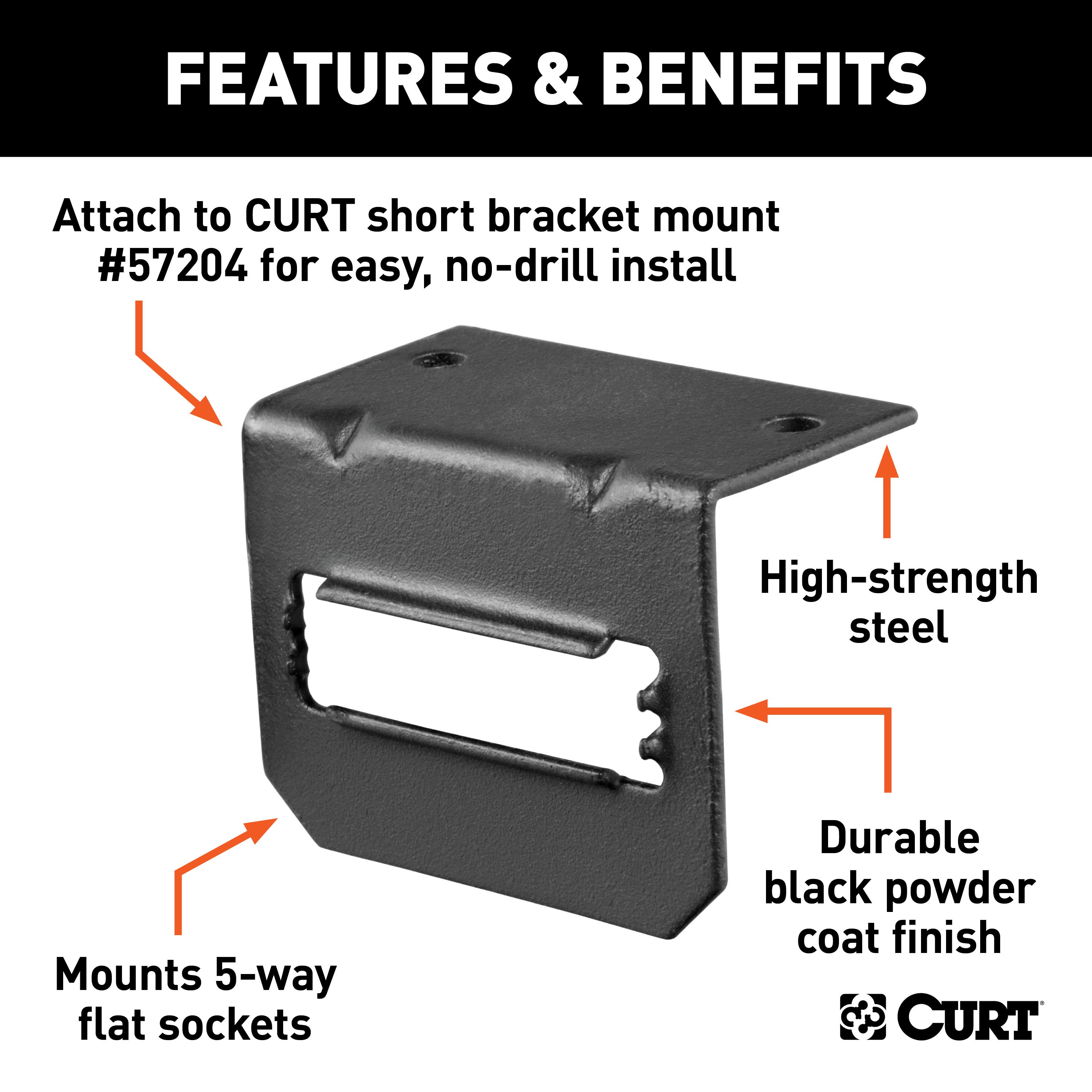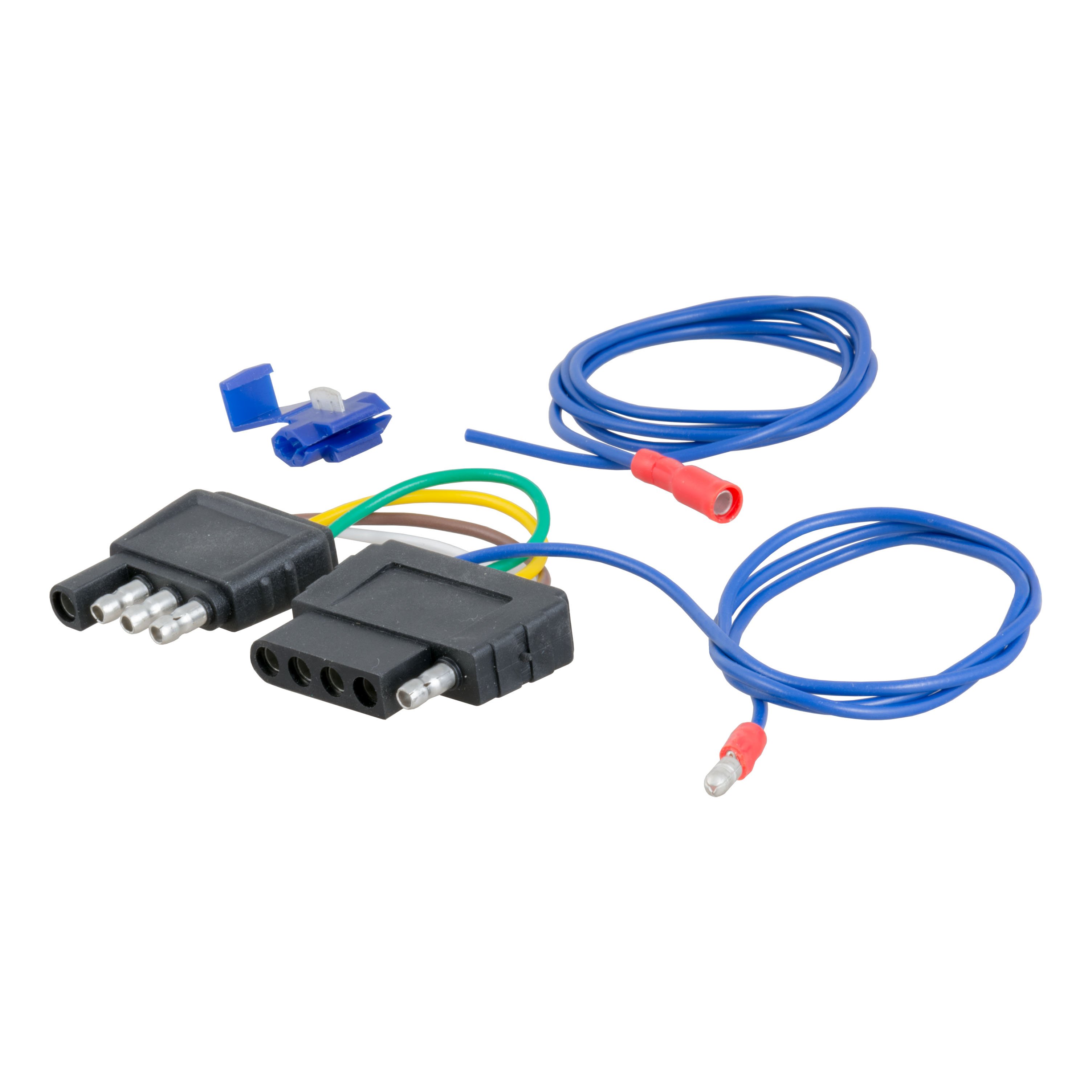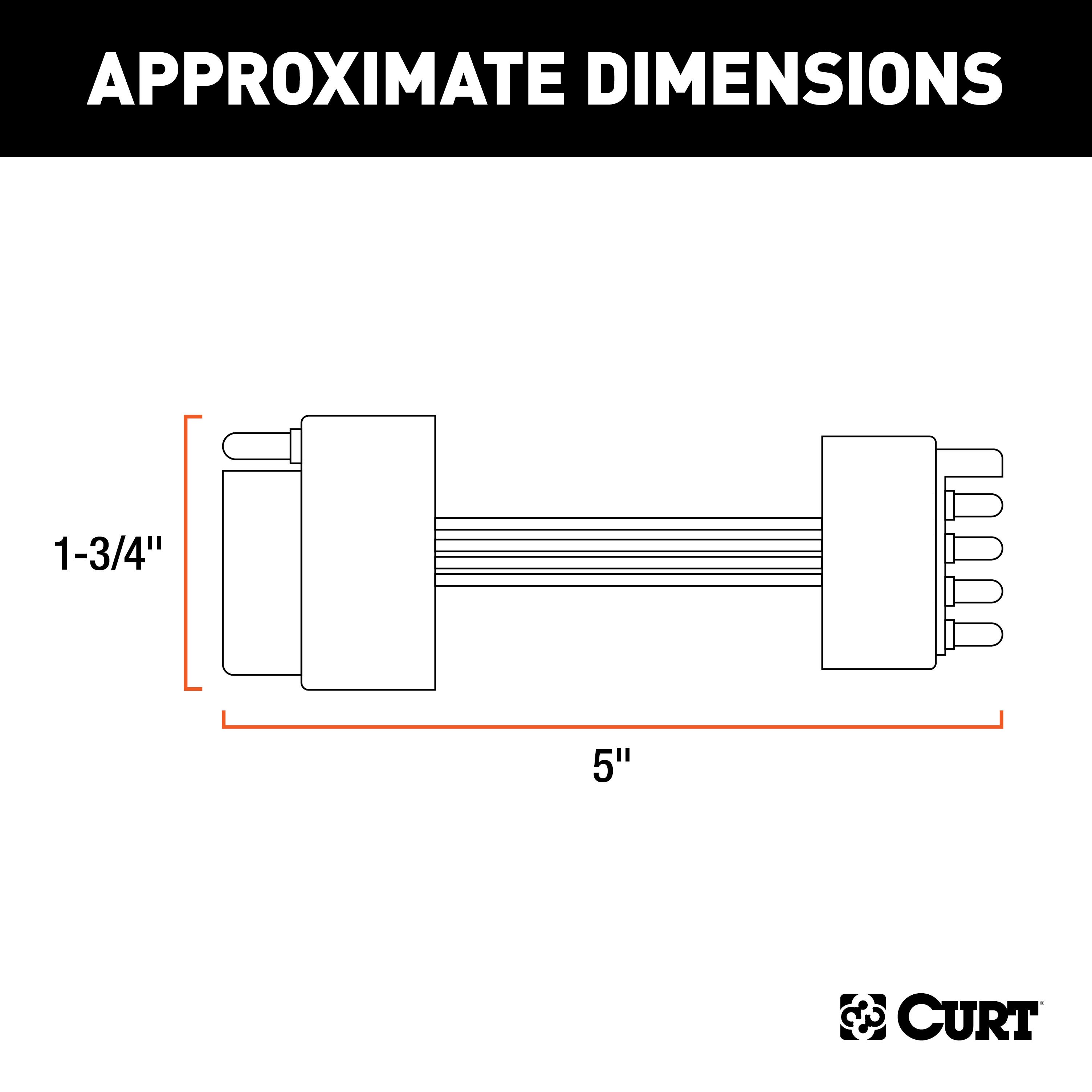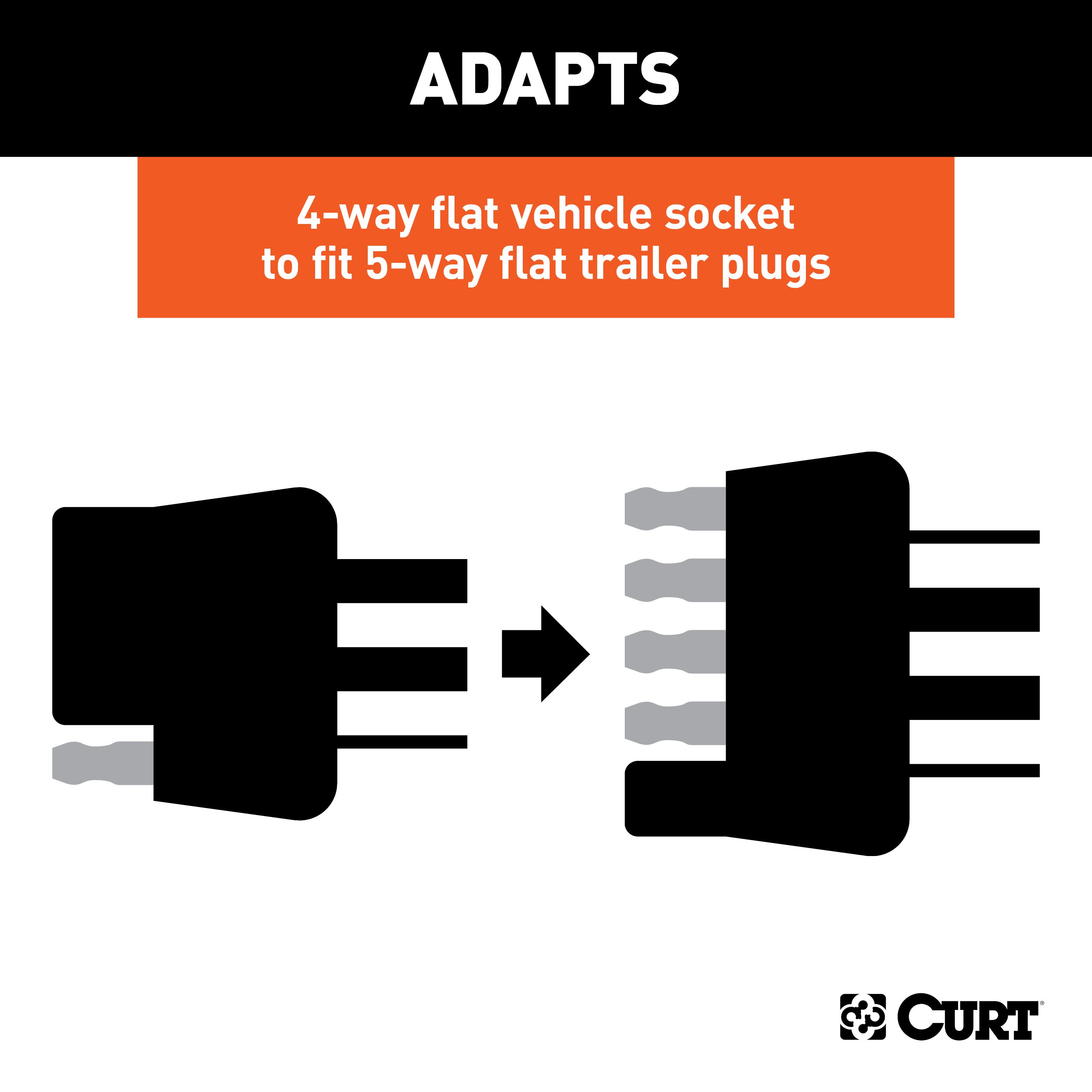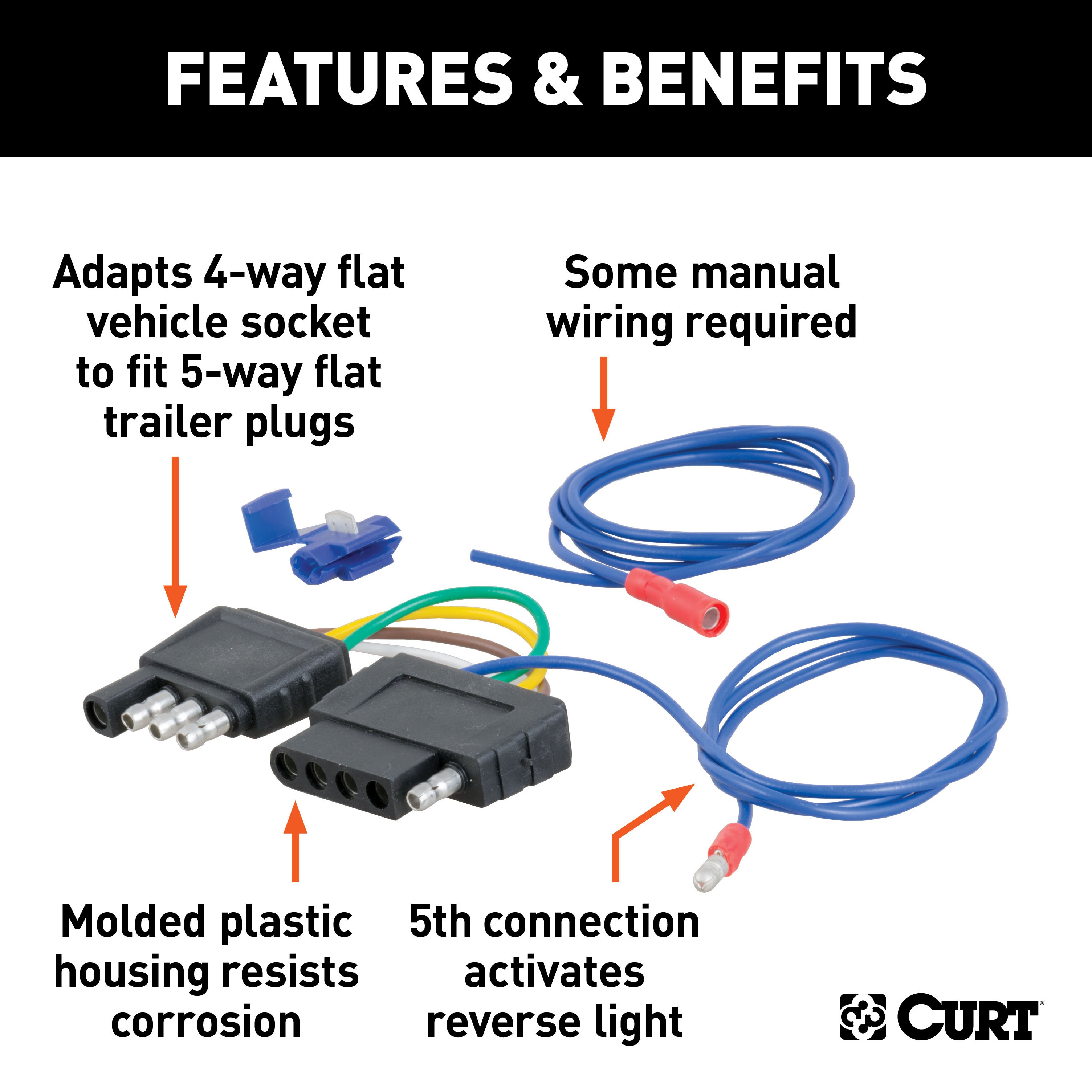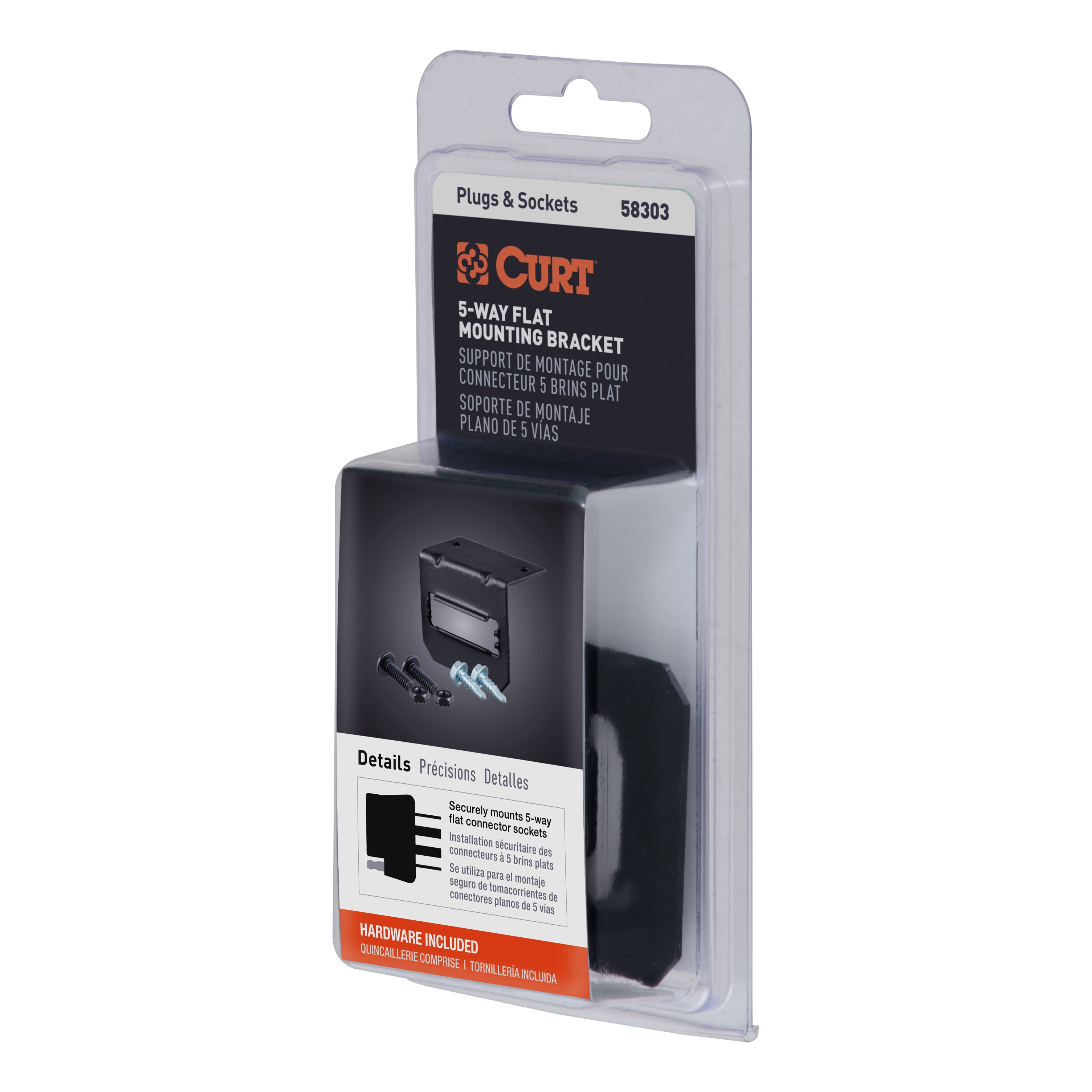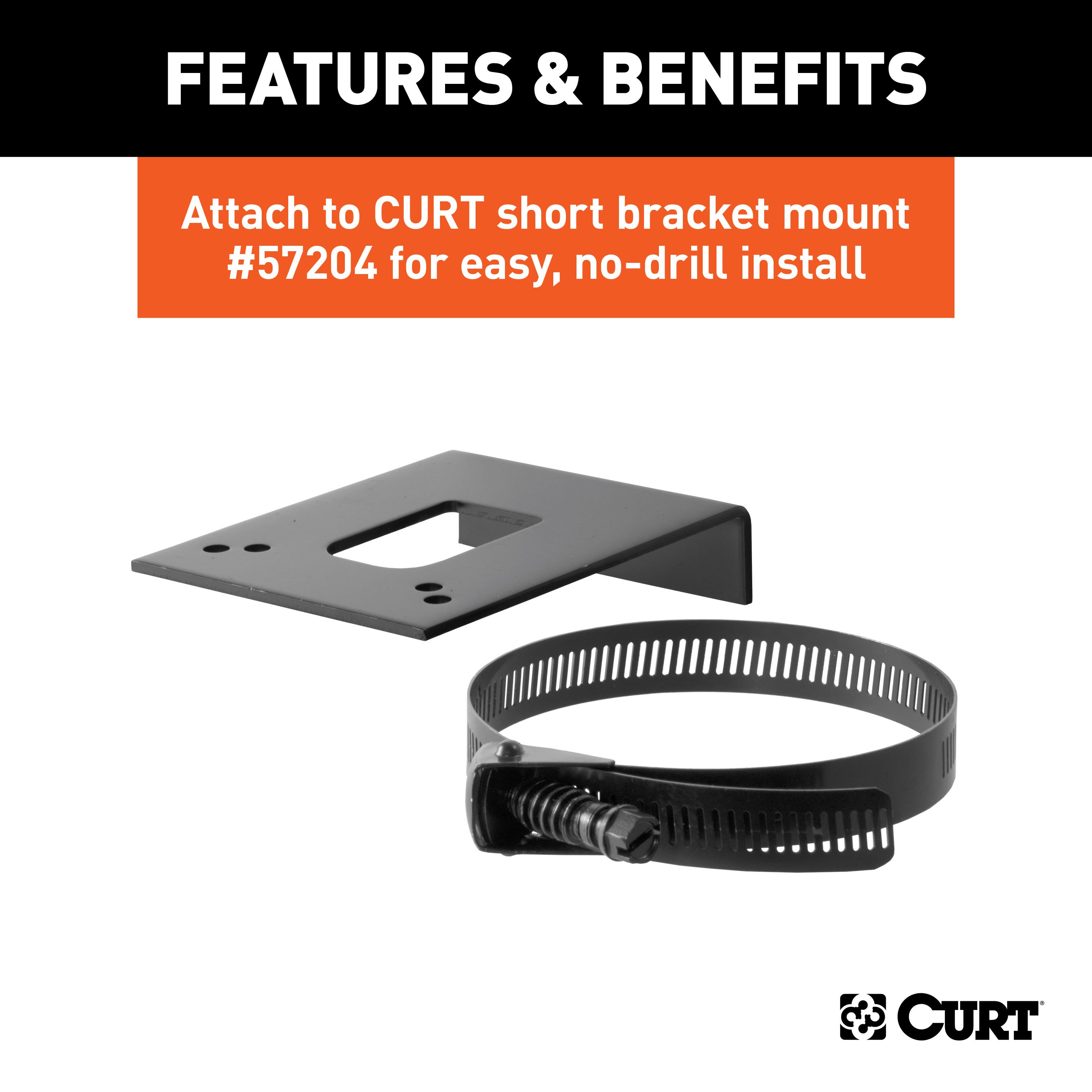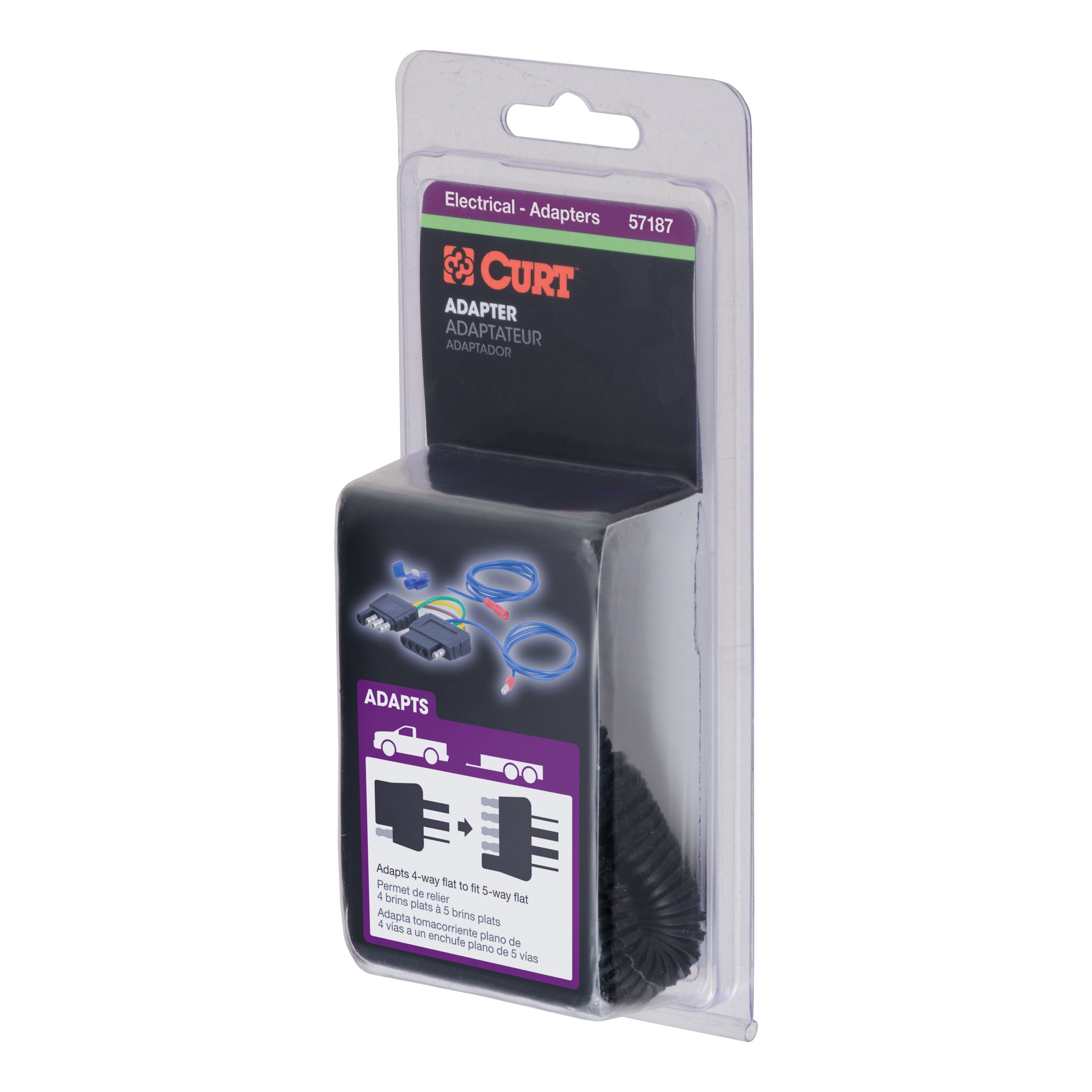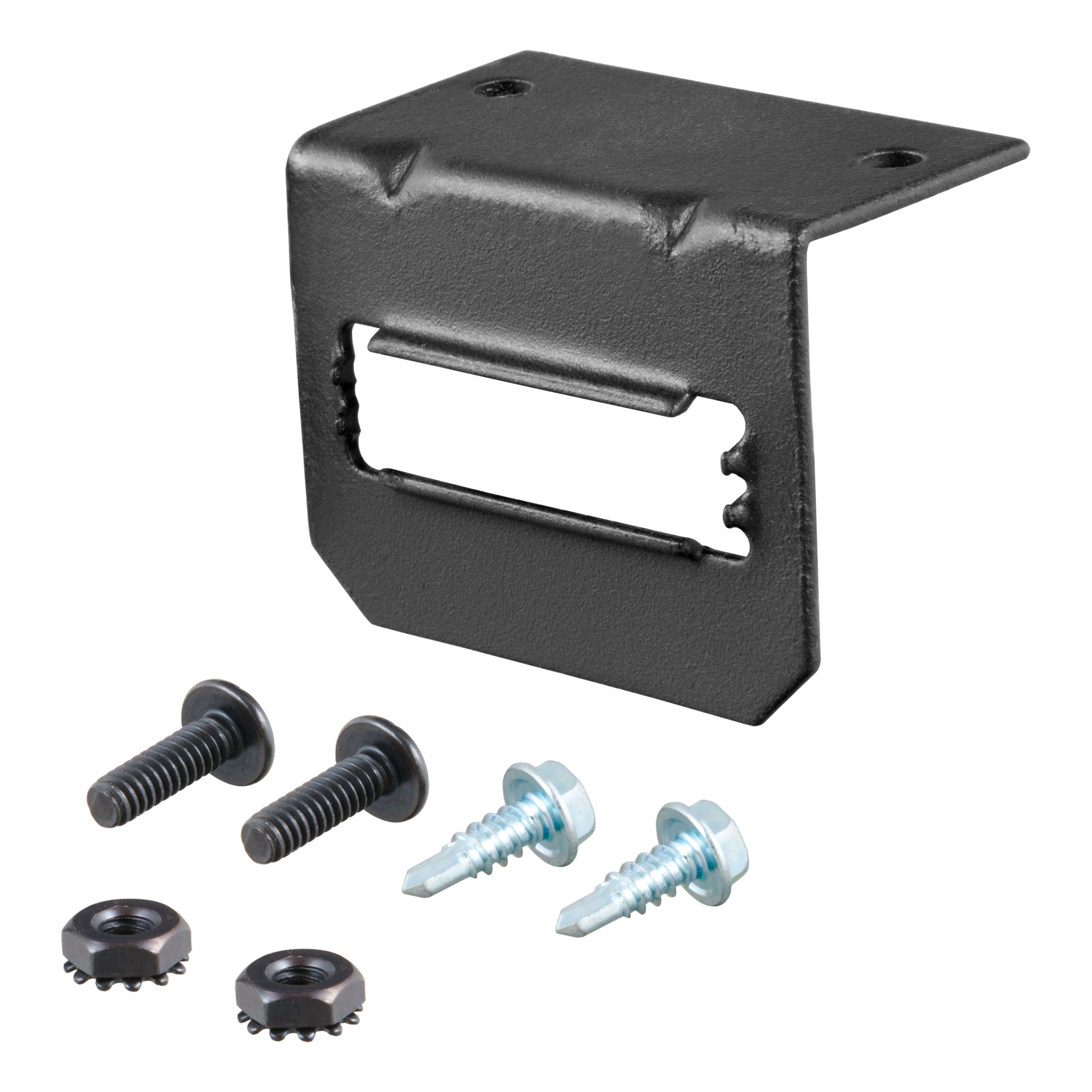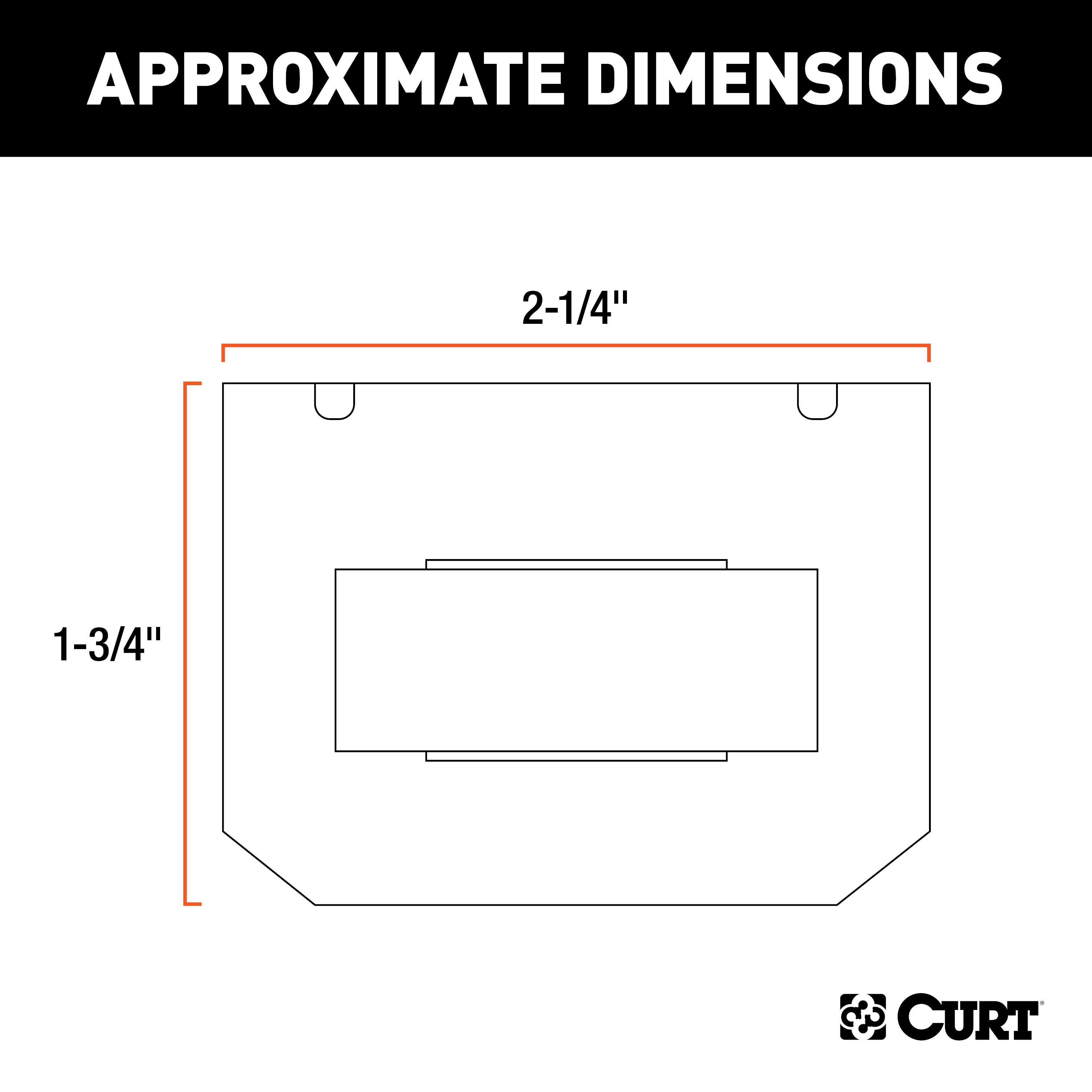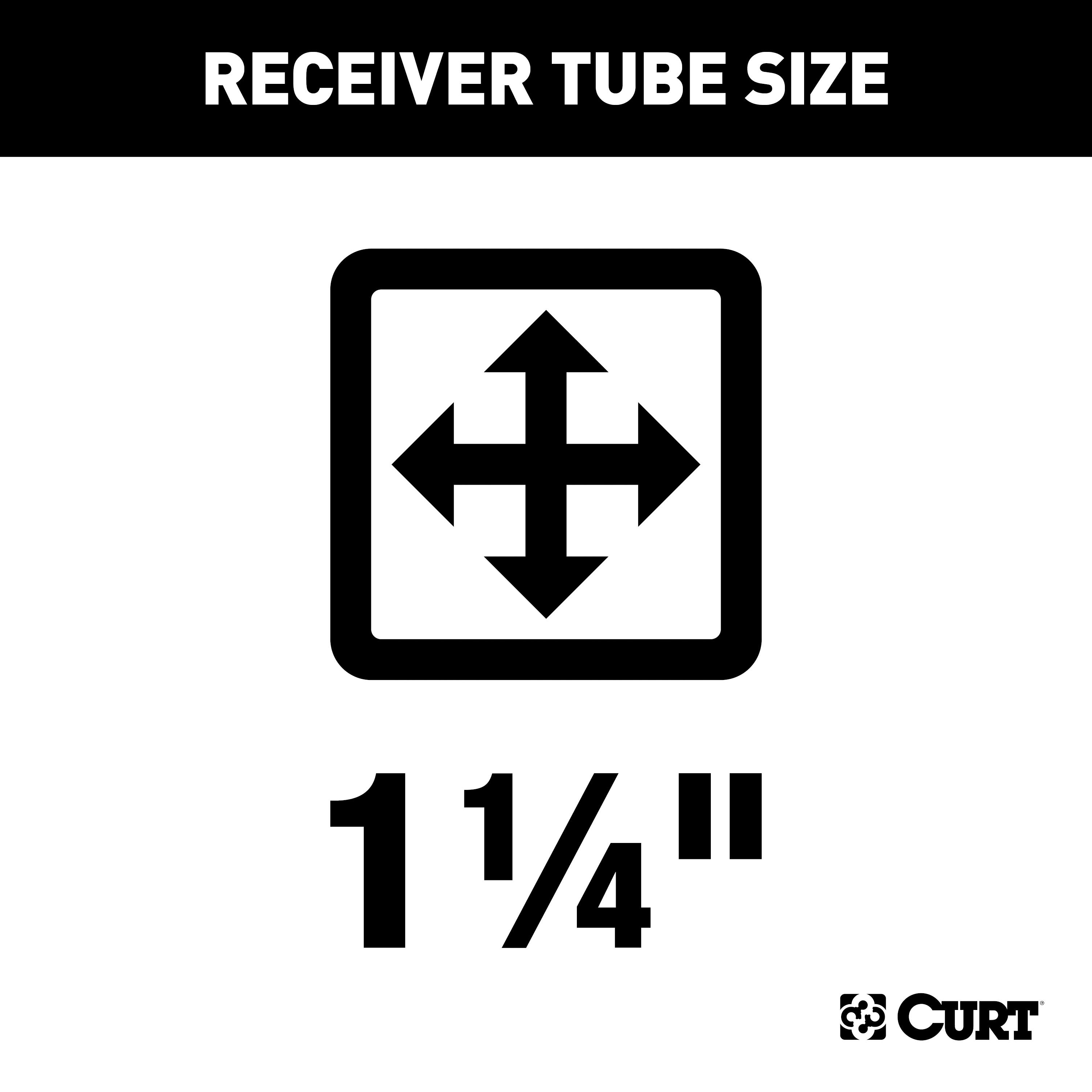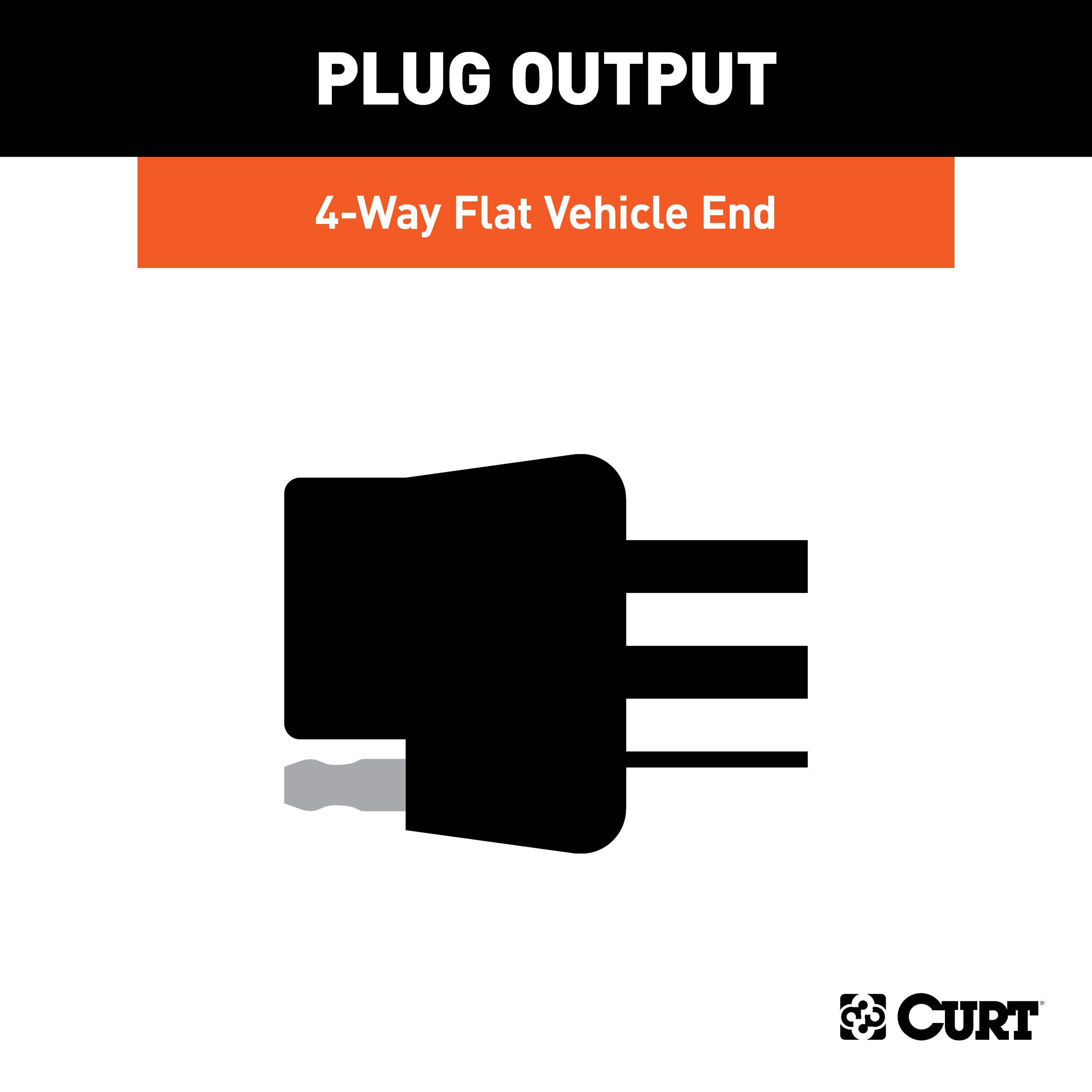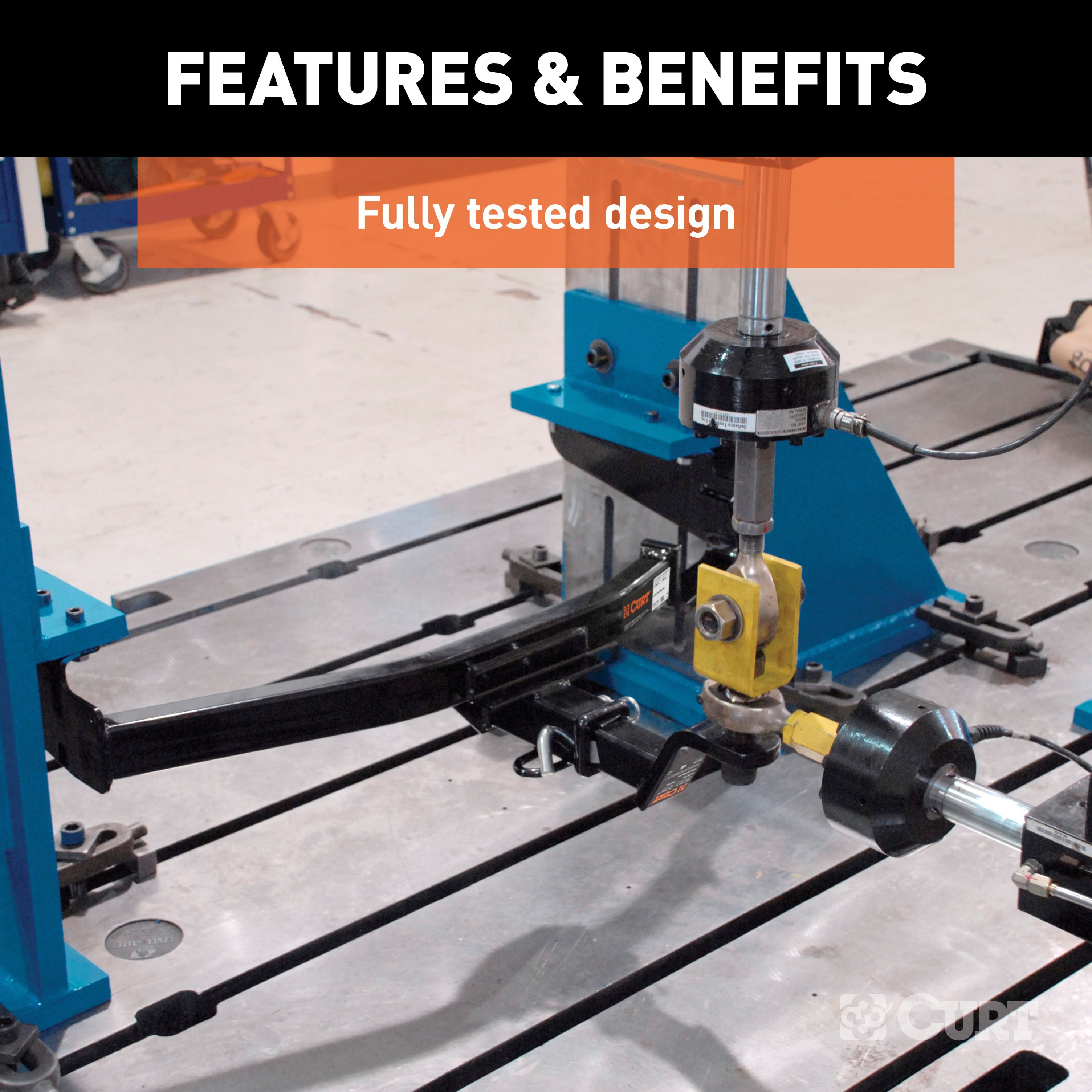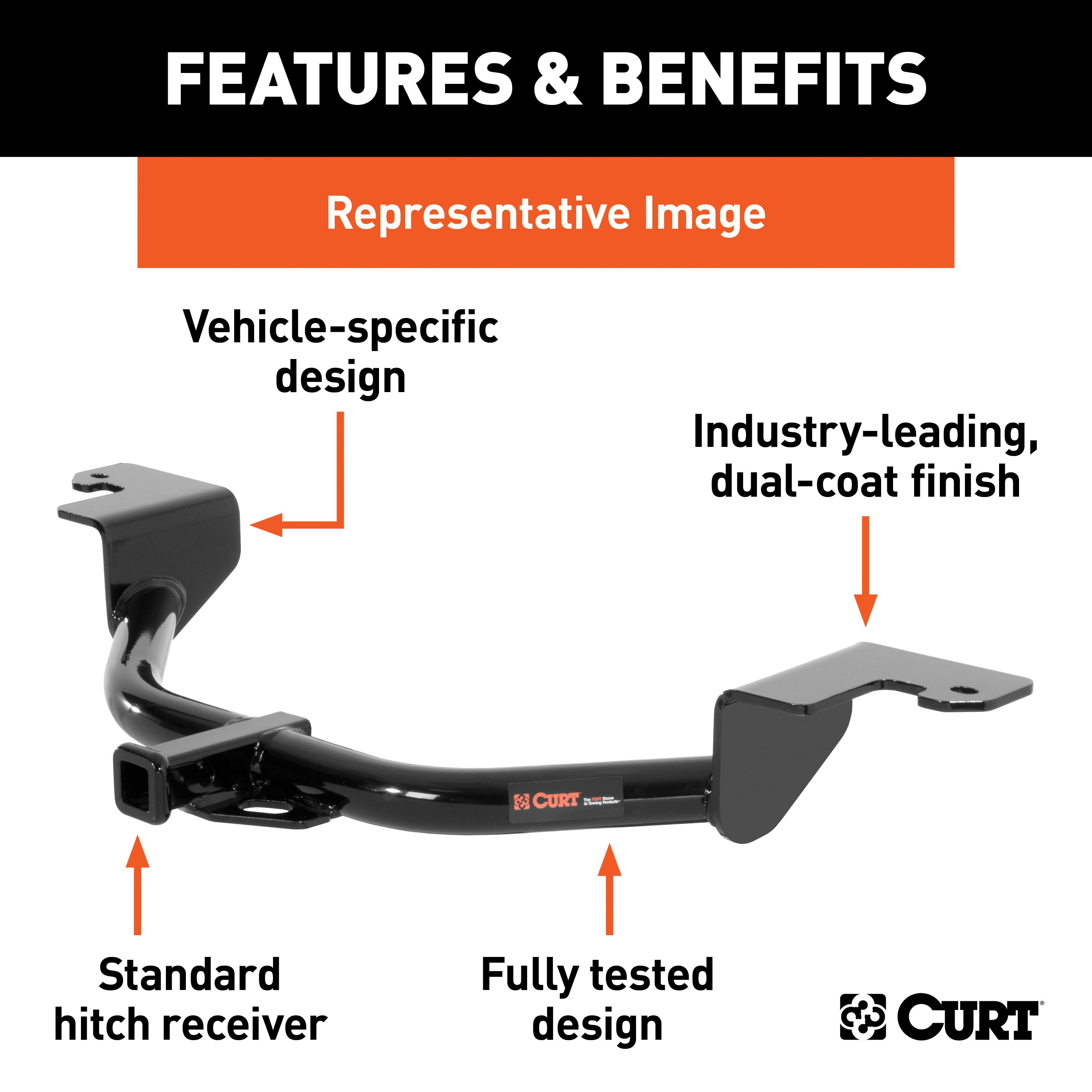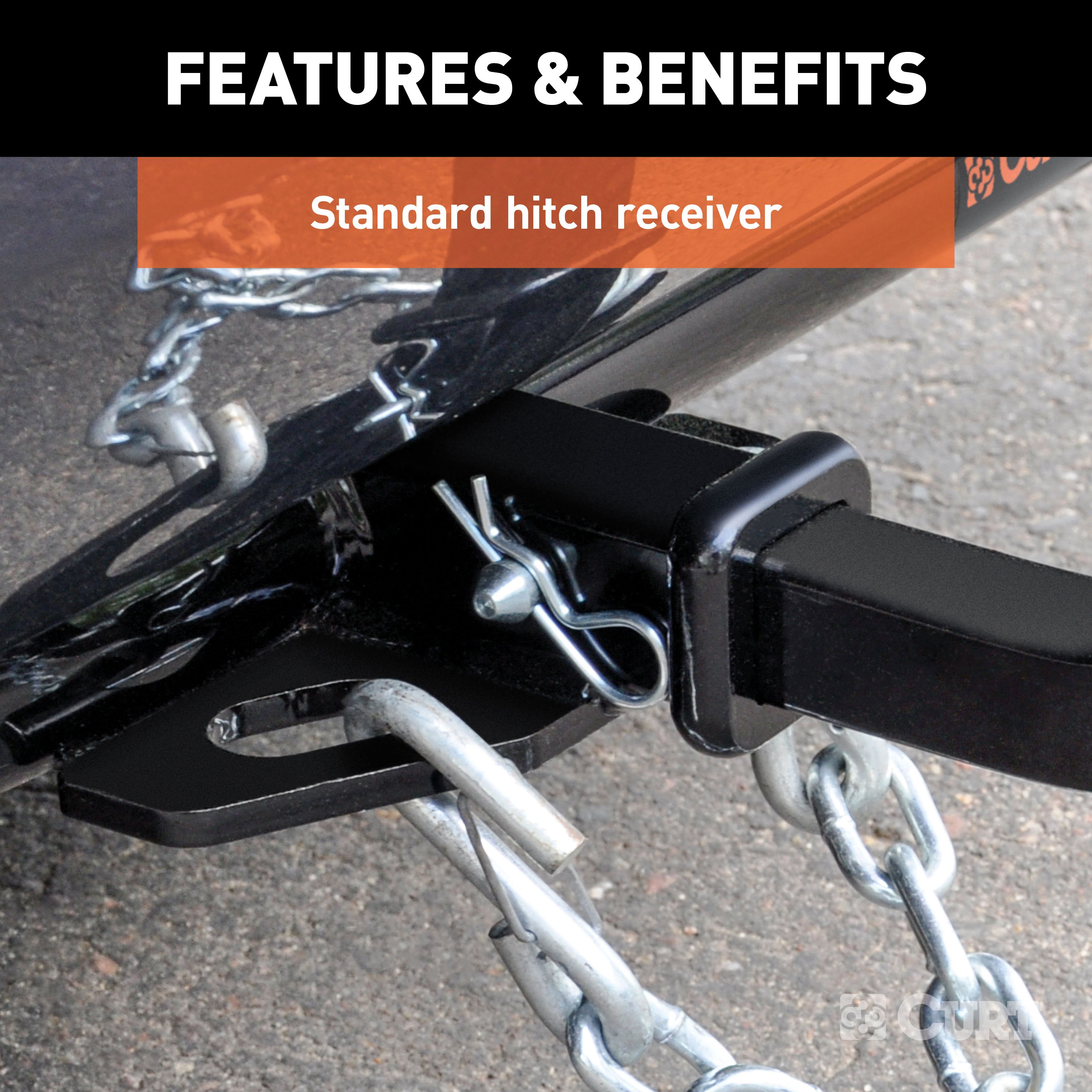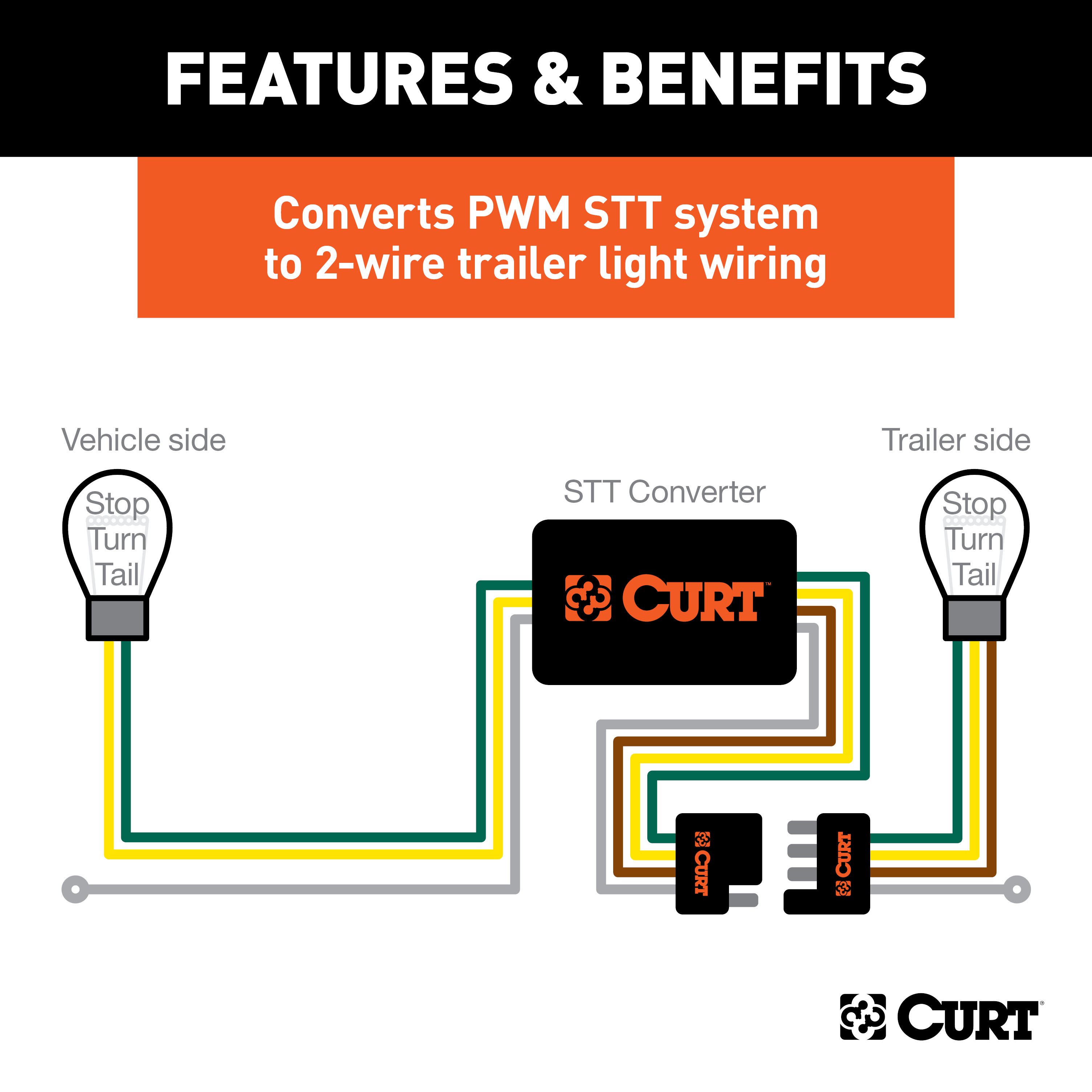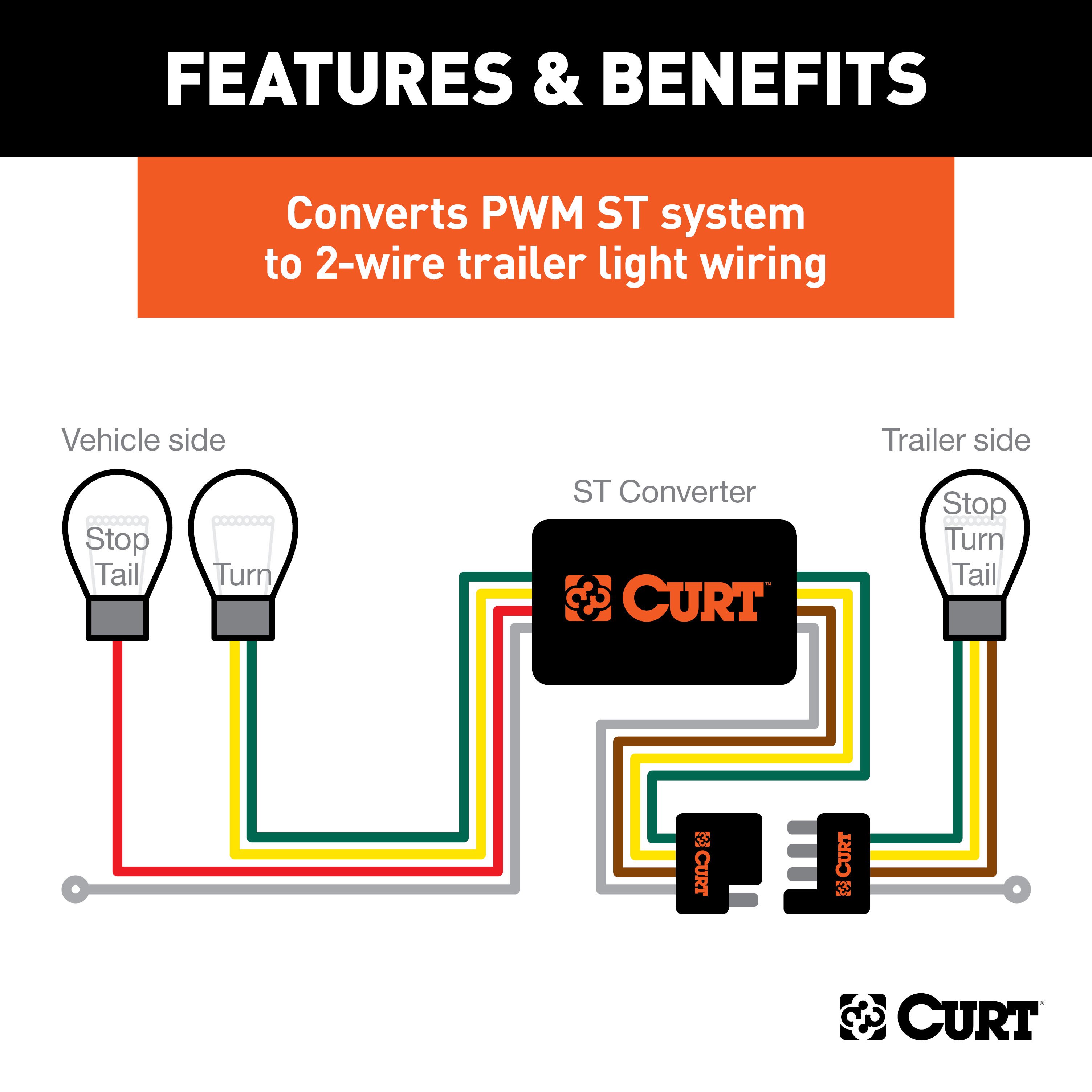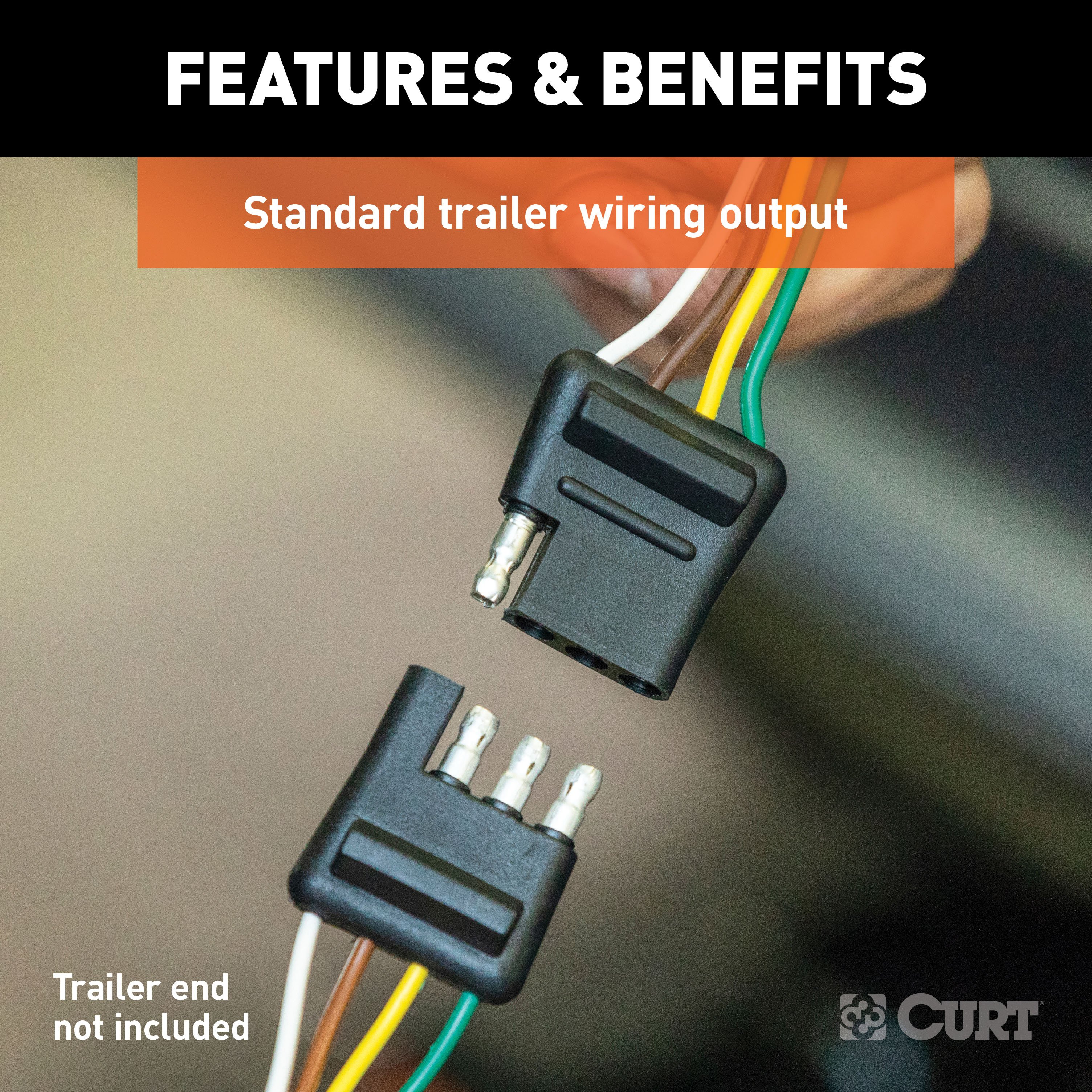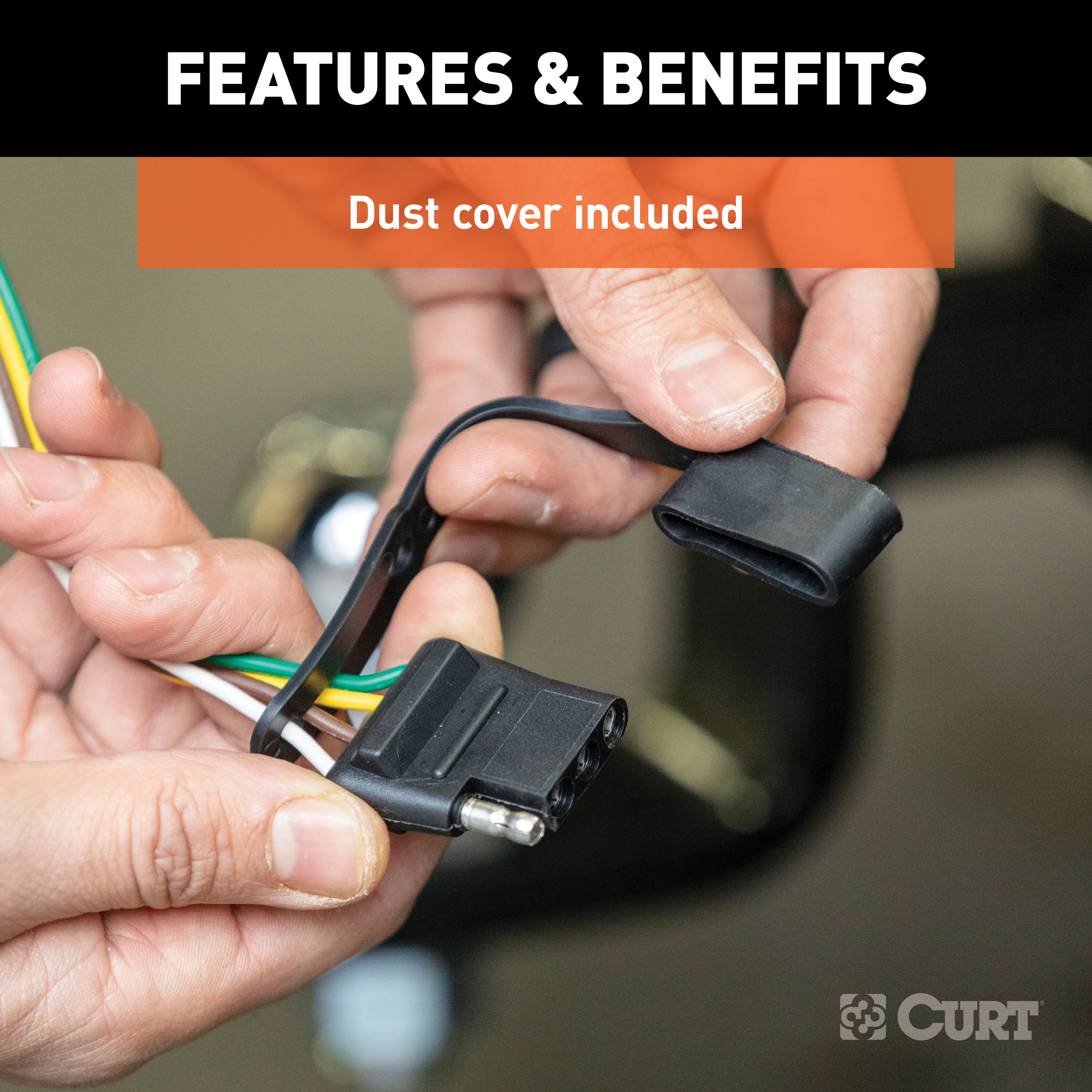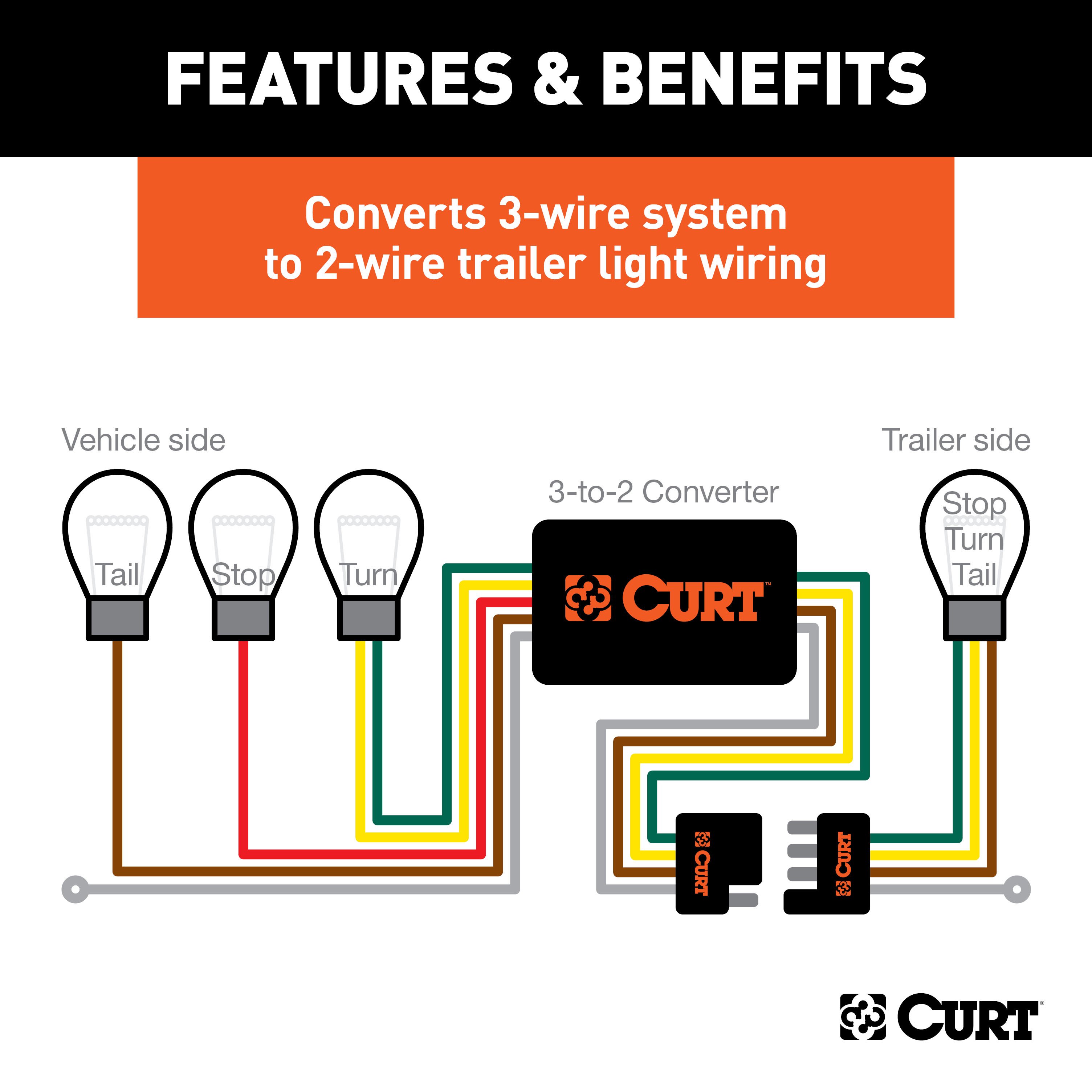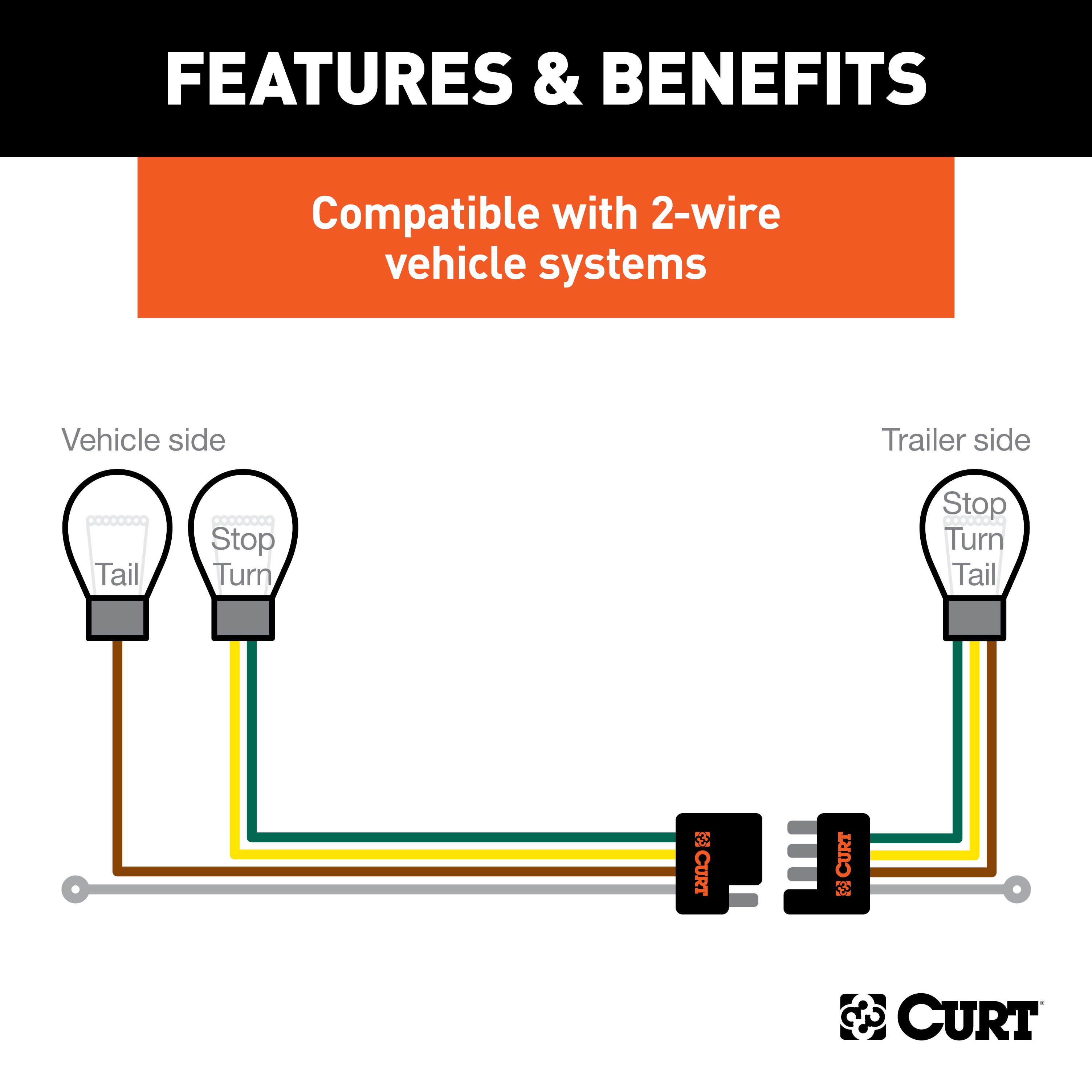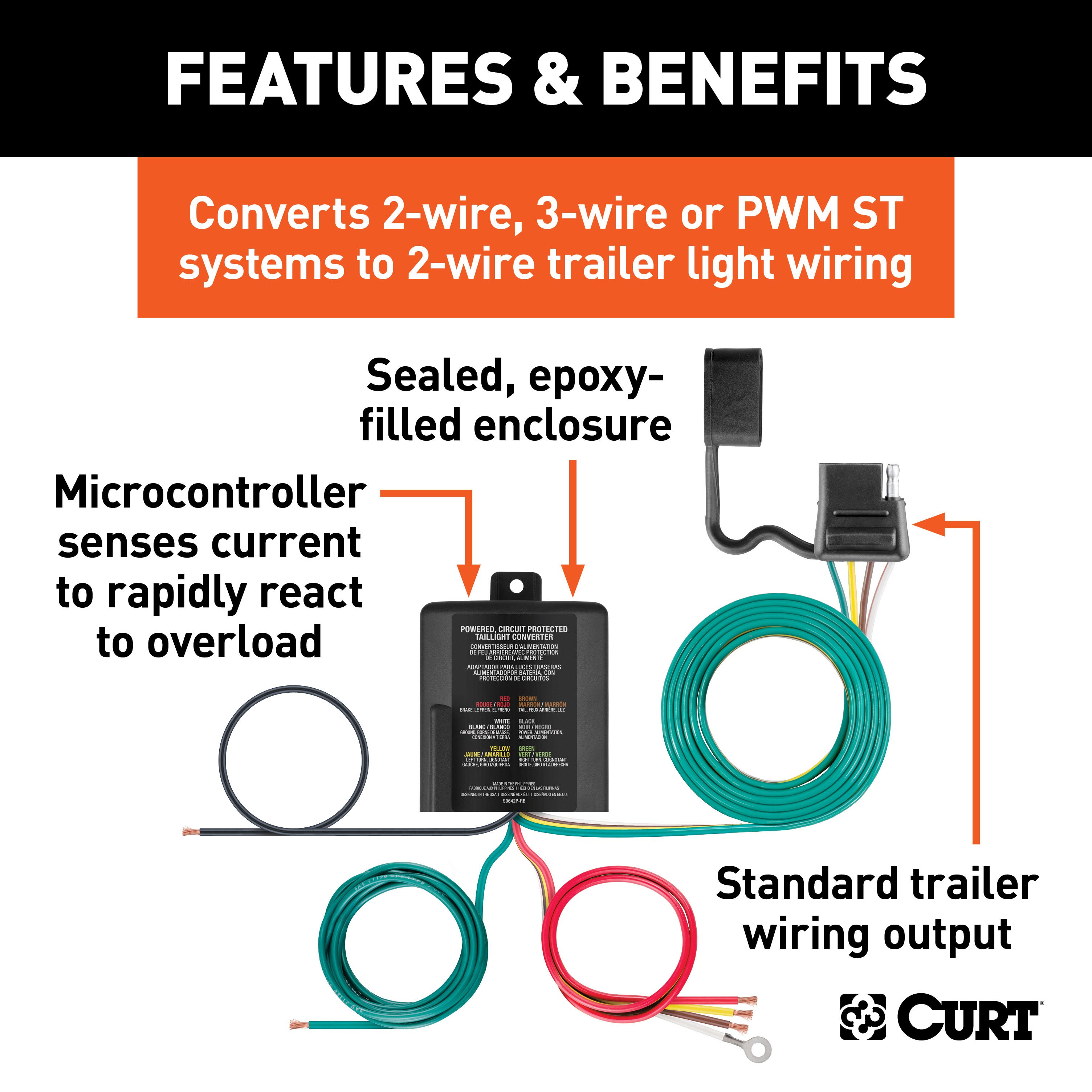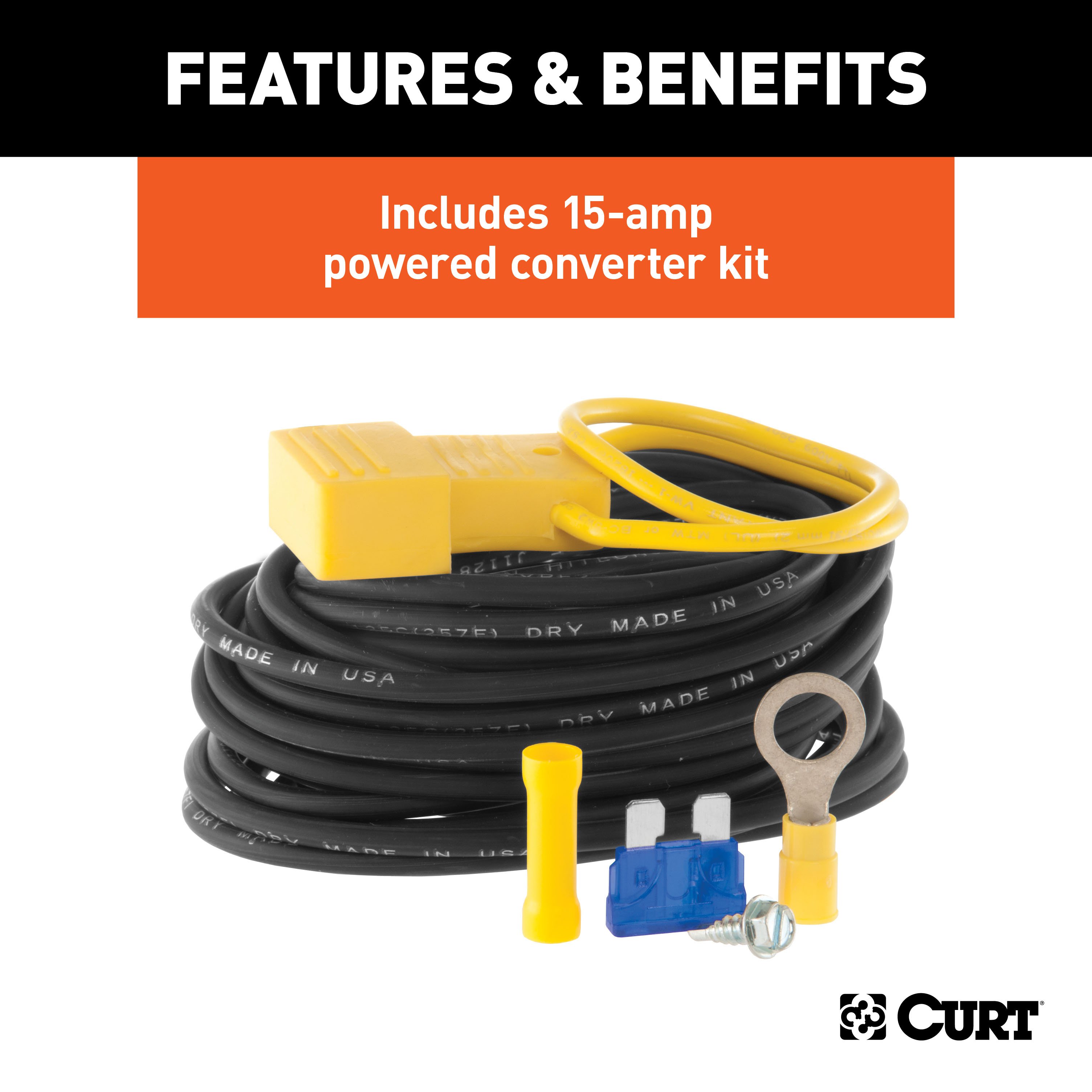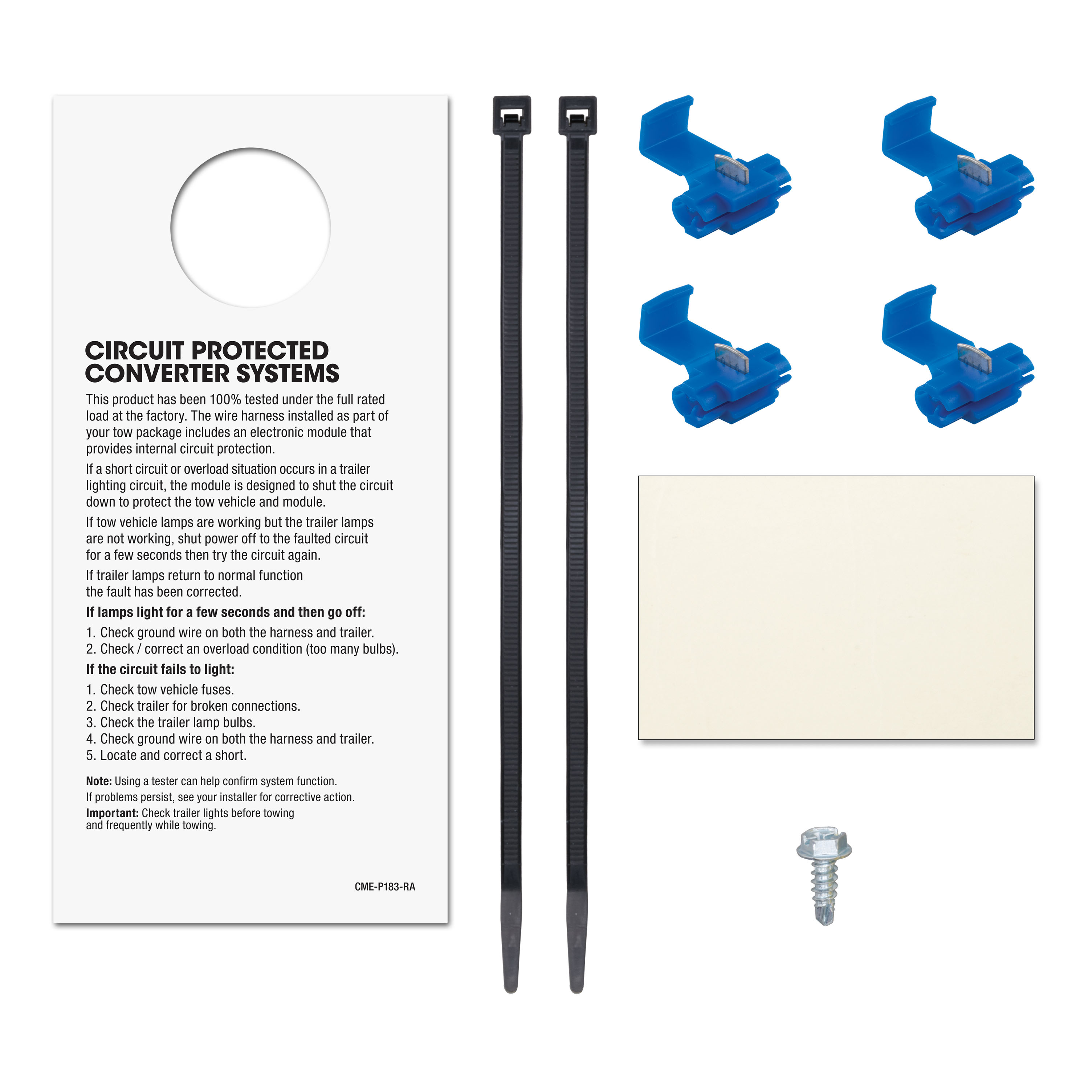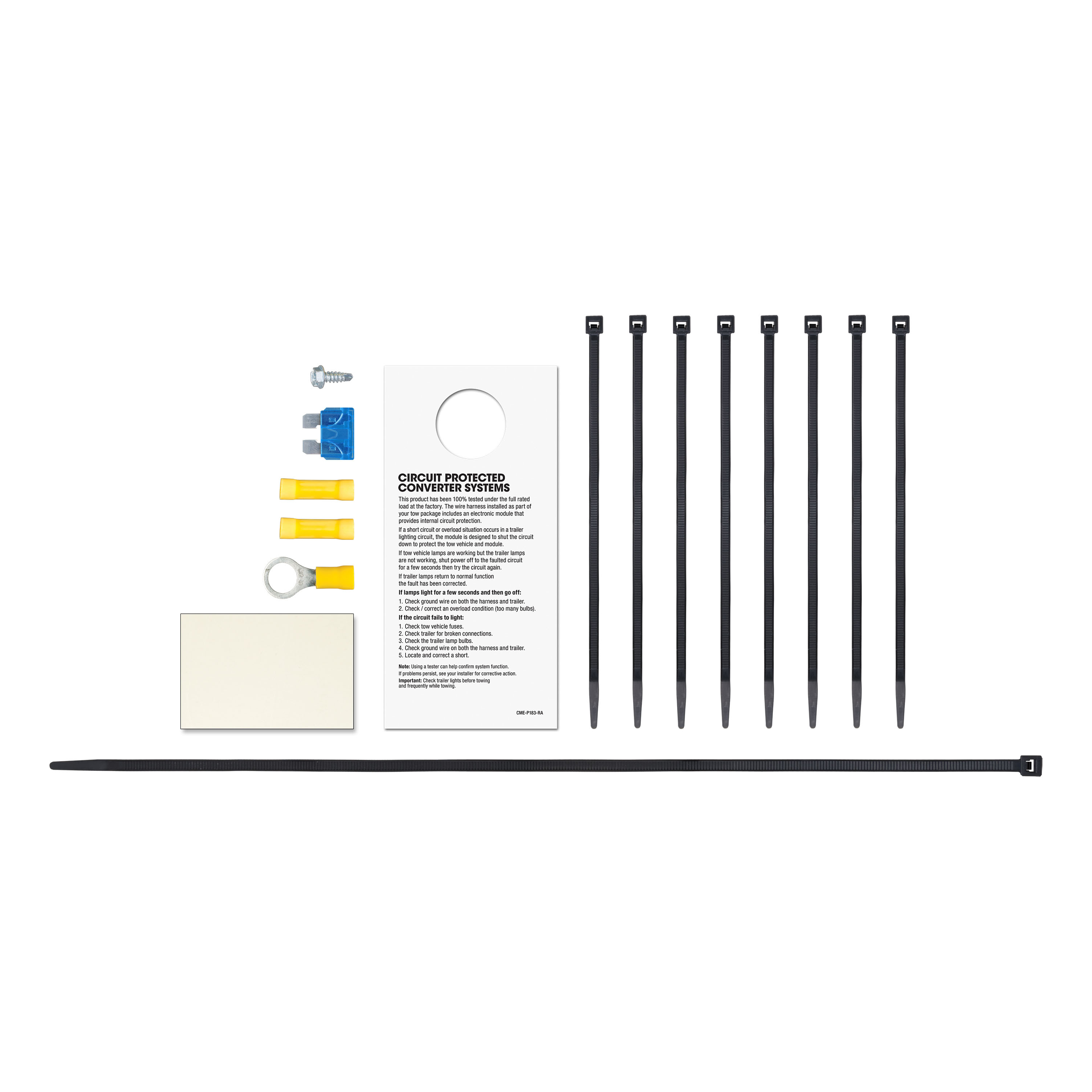Product Details
- Brand: Curt
- Model: 11474 59236 57187 58303-CH3711
- Includes: Class 1 Trailer Tow Hitch, Multi-Function Taillight Converter Kit, 4-Way to 5-Way Flat Adapter for Boat Trailer Surge Brakes, Connector Mounting Bracket for 5-Way Flat
Compatibility Chart
Description
Get Expert Help
For 2005-2018 VW Jetta Trailer Hitch + Wiring 5 Pin Fits Sedan Except Diesel Curt 11474 1-1/4 Tow Receiver Install Notes
Installation Instructions for Volkswagen Jetta Sedan and Wagon, Golf Wagon (Canada Only)
Part Numbers:
- 11474
Wiring Access Location:
Not Specified
Tools Required:
-
25 and #27 Torx Drivers
- 10mm and 13mm Sockets
- 3/4" and 11/16" Sockets
- 10" Extension
- Ratchet
- Torque Wrench
- Rotary Cutting Tool
- Tape Measure
- Safety Glasses
Step-by-Step Instructions:
-
Lower Passenger Side Underbody Panel:
- Remove (3) Torx head screws and (2) hex nuts.
- Save fasteners for reinstallation in Step 12.
-
Lower Fuel Vapor Canister (if present):
- Remove (3) hex head flange bolts and save for Step 11.
-
Lower Exhaust:
- Remove (2) hex flange bolts from the exhaust hanger bracket.
- Leave the muffler attached to the exhaust hanger bracket and return the bolts to the vehicle owner.
-
Fishwire Hardware into Passenger Frame Rail:
- Fishwire a 7/16" carriage bolt and CM-SP2 spacer through the access hole and out the two forward holes in the bottom of the passenger side frame rail.
- Refer to the Fishwire Technique diagram for details.
-
Remove Spare Tire and Plug:
- Remove the spare tire and forward plug on the driver side of the spare tire well.
- Return the plug to the vehicle owner.
-
Position Hitch and Secure Passenger Side:
- Raise the hitch into position over the exhaust.
- Thread the passenger side fishwires through the slots in the passenger side mounting plate.
- Secure with (2) 7/16" hex flange nuts.
- Take care not to push the carriage bolts into the frame rail.
-
Secure Driver Side:
- Position the driver side mounting plate between the exhaust hanger bracket and the driver side frame rail.
- Secure using (2) M8 hex flange bolts.
-
Fishwire Remaining Hardware:
- Fishwire the remaining 7/16" carriage bolt and CM-SP2 spacer through the access hole and out the slotted hole on the outer side of the passenger side frame rail.
- Secure with a 7/16" hex flange nut.
- Take care not to drop the carriage bolt into the frame rail.
-
Seal Spare Tire Well Plug Hole:
- Use silicone caulk (or equivalent) to seal the tire well plug hole from exhaust fumes and water.
- Place the 11474-SP spacer onto the hole and caulk around it.
- Install a 1/2" carriage bolt through the hole and secure with a 1/2" hex flange nut from under the vehicle.
-
Torque Hardware:
- Torque all M8 hardware to 23 ft-lbs.
- Torque all 7/16" hardware to 70 ft-lbs.
- Torque all 1/2" hardware to 110 ft-lbs.
-
Reinstall Fuel Vapor Canister:
- Use the hardware removed in Step 2 to reinstall the canister.
-
Trim and Reinstall Underbody Panel:
- Trim the rear underbody panel as shown in the Underbody Panel Trim Diagram (Wagon or Sedan).
- Reinstall the underbody panel using the fasteners removed in Step 1.
-
Reinstall Spare Tire:
- Return the spare tire and other removed items to the trunk.
Hardware List:
- (3) 7/16" Carriage Bolts
- (2) CM-SP2 Square Hole Spacers (0.250 x 0.88 x 2.25")
- (3) 7/16" Hex Flange Nuts
- (1) 1/2" Carriage Bolt, 1-3/4"
- (1) 1/2" Hex Flange Nut
- (2) M8 x 1.25 x 35mm Hex Flange Bolts
- (1) 11474-SP Spacer
Safety Notes:
- Periodically check this receiver hitch to ensure all fasteners are tight and structural components are sound.
- Warning: All non-trailer loads applied to this product must be supported by 18050 stabilizing straps.
- Failure to properly support non-trailer loads will void the product warranty.
Specifications:
- Gross Load Capacity (Weight Carrying Hitch):
- 2,000 lbs. Trailer Weight
- 200 lbs. Tongue Weight
- Hitch Weight: 29 lbs.
- Professional Install Time: 45 minutes
- Novice (DIY) Install Time: 90 minutes
Manufacturer Notes:
- No drilling is required.
- Fishwire hardware installation is required.
- Underbody panel trimming is necessary.
- Designed for use with Ball Mount #45520.
- Euro Mount options available:
-
45561 (1-7/8" Ball)
-
45562 (2" Ball)
-
- For installation questions, call Technical Support at 1-877-287-8634.
End of Instructions
Installation Instructions for Volkswagen Jetta Sedan and Wagon, Golf Wagon (Canada Only)
Part Numbers:
- 11474
Wiring Access Location:
Not Specified
Tools Required:
-
25 and #27 Torx Drivers
- 10mm and 13mm Sockets
- 3/4" and 11/16" Sockets
- 10" Extension
- Ratchet
- Torque Wrench
- Rotary Cutting Tool
- Tape Measure
- Safety Glasses
Step-by-Step Instructions:
-
Lower Passenger Side Underbody Panel
- Remove (3) Torx head screws and (2) hex nuts.
- Save fasteners for reinstallation in Step 12.
-
Lower Fuel Vapor Canister (if present)
- Remove (3) hex head flange bolts and save for Step 11.
-
Lower Exhaust
- Remove (2) hex flange bolts from the exhaust hanger bracket.
- Leave the muffler attached to the exhaust hanger bracket and return the bolts to the vehicle owner.
-
Fishwire Hardware into Passenger Frame Rail
- Fishwire a 7/16" carriage bolt and CM-SP2 spacer through the access hole and out the two forward holes in the bottom of the passenger side frame rail.
- Refer to the Fishwire Technique diagram for details.
-
Remove Spare Tire and Plug
- Remove the spare tire and forward plug on the driver side of the spare tire well.
- Return the plug to the vehicle owner.
-
Position Hitch and Secure Passenger Side
- Raise the hitch into position over the exhaust.
- Thread the passenger side fishwires through the slots in the passenger side mounting plate.
- Secure with (2) 7/16" hex flange nuts.
- Take care not to push the carriage bolts into the frame rail.
-
Secure Driver Side
- Position the driver side mounting plate between the exhaust hanger bracket and the driver side frame rail.
- Secure using (2) M8 hex flange bolts.
-
Fishwire Remaining Hardware
- Fishwire the remaining 7/16" carriage bolt and CM-SP2 spacer through the access hole and out the slotted hole on the outer side of the passenger side frame rail.
- Secure with a 7/16" hex flange nut.
- Take care not to drop the carriage bolt into the frame rail.
-
Seal Spare Tire Well Plug Hole
- Use silicone caulk (or equivalent) to seal the tire well plug hole from exhaust fumes and water.
- Place the 11474-SP spacer onto the hole and caulk around it.
- Install a 1/2" carriage bolt through the hole and secure with a 1/2" hex flange nut from under the vehicle.
-
Torque Hardware
- Torque all M8 hardware to 23 ft-lbs.
- Torque all 7/16" hardware to 70 ft-lbs.
- Torque all 1/2" hardware to 110 ft-lbs.
-
Reinstall Fuel Vapor Canister
- Use the hardware removed in Step 2 to reinstall the canister.
-
Trim and Reinstall Underbody Panel
- Trim the rear underbody panel as shown in the Underbody Panel Trim Diagram (Wagon or Sedan).
- Reinstall the underbody panel using the fasteners removed in Step 1.
-
Reinstall Spare Tire
- Return the spare tire and other removed items to the trunk.
Hardware List:
- (3) 7/16" Carriage Bolts
- (2) CM-SP2 Square Hole Spacers (0.250 x 0.88 x 2.25")
- (3) 7/16" Hex Flange Nuts
- (1) 1/2" Carriage Bolt, 1-3/4"
- (1) 1/2" Hex Flange Nut
- (2) M8 x 1.25 x 35mm Hex Flange Bolts
- (1) 11474-SP Spacer
Safety Notes:
- Periodically check this receiver hitch to ensure all fasteners are tight and structural components are sound.
- Warning: All non-trailer loads applied to this product must be supported by 18050 stabilizing straps.
- Failure to properly support non-trailer loads will void the product warranty.
Specifications:
- Gross Load Capacity (Weight Carrying Hitch):
- 2,000 lbs. Trailer Weight
- 200 lbs. Tongue Weight
- Hitch Weight: 29 lbs.
- Professional Install Time: 45 minutes
- Novice (DIY) Install Time: 90 minutes
Additional Notes:
- Attention: This is a summary of the installation procedure. For complete installation instructions, including diagrams and detailed information from the manufacturer, please download the full installation PDF.
- For technical support and assistance, our team of experts is available to help. You can reach our tech support by visiting www.trailerjacks.com or calling 877-869-6690.
Manufacturer Notes:
- No drilling is required.
- Fishwire hardware installation is required.
- Underbody panel trimming is necessary.
- Designed for use with Ball Mount #45520.
- Euro Mount options available:
-
45561 (1-7/8" Ball)
-
45562 (2" Ball)
-
End of Instructions
Installation Instructions for Wiring Harness with Powered Converter
Part Numbers:
- 59236
Wiring Access Location:
Refer to the wiring location guides based on vehicle type provided in the manual:
SUVs and Vans:
- S1: Behind driver-side taillight housing
- S2: Behind passenger-side taillight housing
- S3: Behind driver-side rear access panel
- S4: Behind passenger-side rear access panel
- S5: Behind driver-side rear bumper
- S6: Behind the center of the rear bumper
- S7: Behind passenger-side rear bumper
- S8: Under rear floor panel
Passenger Cars:
- P1: Behind driver-side taillight housing, outside of the trunk
- P2: Behind passenger-side taillight housing, outside of the trunk
- P3: Behind driver-side taillight housing, inside the trunk
- P4: Behind passenger-side taillight housing, inside the trunk
- P5: Behind driver-side rear bumper
- P6: Behind the center of the rear bumper
- P7: Behind passenger-side rear bumper
Trucks:
- T1: Behind driver-side taillight housing
- T2: Behind passenger-side taillight housing
- T3: Behind driver-side rear bumper
- T4: Behind the center of the rear bumper fascia
- T5: Behind passenger-side rear bumper
Determining Vehicle Wiring Types:
To identify the vehicle wiring type, follow these steps:
- Ensure all lights on the vehicle are off.
- Probe the taillight connectors while they remain connected to the vehicle.
- Use the following wiring descriptions to determine the vehicle type:
Wiring Types:
-
Two-Wire System:
- Combined stop and turn signal with an independent tail signal.
- Indicator: Flashing signal on one side for turn signals; both sides activate for brakes.
-
Three-Wire System:
- Independent stop, turn, and tail signals.
- Indicator: Separate wires for turn signals and brake lights.
-
PWM-ST System:
- Combined stop and tail signal with an independent turn signal.
- Indicator: Stop and tail signals use the same wire; separate turn signal wires.
-
PWM-STT System:
- Combined stop, turn, and tail signal.
- Indicator: A single wire serves stop, turn, and tail functions.
Tools Required:
- Test light
- Utility knife
- Electrical tape
- Wire crimper
- Paper
- Wire stripper
- Pen
Step-by-Step Instructions:
-
Locate the Vehicle Battery
- Disconnect the negative battery terminal securely.
-
Identify Vehicle Taillight Wiring
- Use the wiring location guide and instructions for determining the wiring type.
-
Attach the Input Wires
- Match wires using snap locks:
- Green Wire: Splice to the right stop/turn wire.
- Red Wire: Ground with the white wire.
- Yellow Wire: Splice to the left stop/turn wire.
- Brown Wire: Splice to the tail wire.
- Match wires using snap locks:
-
Mount the Converter
- Secure the black converter box near the taillight using the provided double-sided tape.
-
Ground the White Wire
- Use the ring terminal and provided screw to ground the wire at a clean, rust-free location.
-
Route the Power Wire
- Route the black wire to the positive battery terminal, avoiding pinch points or hot components.
-
Install the Fuse
- Add the 15-amp fuse after completing all other steps.
-
Test the System
- Verify turn signals, brake lights, and tail lights using a test light or trailer.
-
Reinstall Components
- Reinstall all removed parts and reconnect the negative battery terminal.
Hardware List:
- Snap locks
- 15-amp fuse and holder
- Ring terminal
- Cable ties
- Double-sided tape
Safety Notes:
- Do not exceed product or tow vehicle lamp load ratings.
- Inspect all wiring periodically for damage or loose connections.
- Avoid drilling without confirming there are no hidden items behind the surface.
Specifications:
- Signal Circuits: 5.0-amps per side
- Tail/Running Circuits: 7.5-amps total
- Compliance: SAE J684
Installation Instructions for Wiring Harness with Powered Converter
Part Numbers:
- 59236
Wiring Access Location:
Refer to the wiring location guides based on vehicle type provided in the manual:
SUVs and Vans:
- S1: Behind driver-side taillight housing
- S2: Behind passenger-side taillight housing
- S3: Behind driver-side rear access panel
- S4: Behind passenger-side rear access panel
- S5: Behind driver-side rear bumper
- S6: Behind the center of the rear bumper
- S7: Behind passenger-side rear bumper
- S8: Under rear floor panel
Passenger Cars:
- P1: Behind driver-side taillight housing, outside of the trunk
- P2: Behind passenger-side taillight housing, outside of the trunk
- P3: Behind driver-side taillight housing, inside the trunk
- P4: Behind passenger-side taillight housing, inside the trunk
- P5: Behind driver-side rear bumper
- P6: Behind the center of the rear bumper
- P7: Behind passenger-side rear bumper
Trucks:
- T1: Behind driver-side taillight housing
- T2: Behind passenger-side taillight housing
- T3: Behind driver-side rear bumper
- T4: Behind the center of the rear bumper fascia
- T5: Behind passenger-side rear bumper
Determining Vehicle Wiring Types:
To identify the vehicle wiring type, follow these steps:
- Ensure all lights on the vehicle are off.
- Probe the taillight connectors while they remain connected to the vehicle.
- Use the following wiring descriptions to determine the vehicle type:
Wiring Types:
-
Two-Wire System:
- Combined stop and turn signal with an independent tail signal.
- Indicator: Flashing signal on one side for turn signals; both sides activate for brakes.
-
Three-Wire System:
- Independent stop, turn, and tail signals.
- Indicator: Separate wires for turn signals and brake lights.
-
PWM-ST System:
- Combined stop and tail signal with an independent turn signal.
- Indicator: Stop and tail signals use the same wire; separate turn signal wires.
-
PWM-STT System:
- Combined stop, turn, and tail signal.
- Indicator: A single wire serves stop, turn, and tail functions.
Tools Required:
- Test light
- Utility knife
- Electrical tape
- Wire crimper
- Paper
- Wire stripper
- Pen
Step-by-Step Instructions:
-
Locate the Vehicle Battery
- Disconnect the negative battery terminal securely.
-
Identify Vehicle Taillight Wiring
- Use the wiring location guide and instructions for determining the wiring type.
-
Attach the Input Wires
- Match wires using snap locks:
- Green Wire: Splice to the right stop/turn wire.
- Red Wire: Ground with the white wire.
- Yellow Wire: Splice to the left stop/turn wire.
- Brown Wire: Splice to the tail wire.
- Match wires using snap locks:
-
Mount the Converter
- Secure the black converter box near the taillight using the provided double-sided tape.
-
Ground the White Wire
- Use the ring terminal and provided screw to ground the wire at a clean, rust-free location.
-
Route the Power Wire
- Route the black wire to the positive battery terminal, avoiding pinch points or hot components.
-
Install the Fuse
- Add the 15-amp fuse after completing all other steps.
-
Test the System
- Verify turn signals, brake lights, and tail lights using a test light or trailer.
-
Reinstall Components
- Reinstall all removed parts and reconnect the negative battery terminal.
Hardware List:
- Snap locks
- 15-amp fuse and holder
- Ring terminal
- Cable ties
- Double-sided tape
Safety Notes:
- Do not exceed product or tow vehicle lamp load ratings.
- Inspect all wiring periodically for damage or loose connections.
- Avoid drilling without confirming there are no hidden items behind the surface.
Specifications:
- Signal Circuits: 5.0-amps per side
- Tail/Running Circuits: 7.5-amps total
- Compliance: SAE J684
Additional Information:
- Attention: This is a summary of the installation procedure. For complete installation instructions, including diagrams and detailed information from the manufacturer, please download the full installation PDF.
Technical Support:
- For technical support and assistance, our team of experts is available to help. You can reach our tech support by visiting www.trailerjacks.com or calling 877-869-6690.
Warranty:
- Warranty Duration: [Insert warranty period]
- Coverage Details: [Insert coverage details]
- For complete warranty information, please download the full installation PDF.
Note: Ensure all connections are secure and test the wiring with a properly wired trailer or test light to confirm functionality.
Installation Instructions for 4-Way to 5-Way Adapter
Tools Required:
- Wire Crimpers
- Wire Cutters
- Test Light or Multimeter
- Quick Splice Connector (provided)
- Additional Wire (if needed for reverse light connection)
- Cable Ties (optional)
- Silicone Sealant (optional)
Overview:
This adapter converts your 4-way flat trailer connector to a 5-way flat, adding reverse light functionality for trailers with reverse lights or surge brake lockout systems.
Step-by-Step Instructions:
1. Mount the Adapter:
- Select a suitable mounting location near the hitch and securely install the adapter.
2. Connect the 4-Way Plug:
- Plug the 4-way flat connector from the adapter into the existing 4-way flat connector on your vehicle.
- This connection provides tail lights, left turn, right turn, and brake light functions.
3. Ground the Adapter:
- Locate a solid ground point near the adapter, such as the vehicle frame.
- Clean the surface to ensure proper contact.
- Secure the white ground wire from the adapter using the provided eyelet and a self-tapping screw.
4. Connect the Reverse Light Circuit:
-
Locate the Reverse Light Wire:
- Identify the reverse light circuit on your vehicle, typically found near the tail light assembly.
- Use the provided quick splice connector to attach the adapter's blue wire to the vehicle’s reverse light circuit.
-
Extend the Blue Wire (If Needed):
- If the adapter's blue wire is too short, splice in additional wire to reach the reverse light circuit.
- Route the wire safely, avoiding hot or moving parts, and secure it with cable ties.
-
Seal the Connection:
- If routing the wire through a grommet, seal any openings with silicone to prevent water ingress.
5. Secure the Wiring:
- Use cable ties to secure all wires and prevent them from hanging loosely or contacting sharp edges.
6. Test the Adapter:
- Plug the adapter into your trailer’s 5-way flat connector or use a test light to verify functionality:
- Brown Wire: Tail lights (solid when headlights are on).
- Yellow Wire: Left turn signal and brake light (flashes with turn signal).
- Green Wire: Right turn signal and brake light (flashes with turn signal).
- Blue Wire: Reverse light (active when the vehicle is in reverse).
- White Wire: Ground (continuity with the vehicle's ground).
Notes:
- This adapter is designed specifically for trailers requiring a reverse light or surge brake lockout circuit.
- Ensure all connections are secure to avoid intermittent functionality.
- Always follow safety guidelines during installation and verify all circuits before use.
Warning: Improper installation or overloaded circuits can result in damage or fire. Test all connections carefully.
Installation Instructions for 4-Way to 5-Way Adapter
Tools Required:
- Wire Crimpers
- Wire Cutters
- Test Light or Multimeter
- Quick Splice Connector (provided)
- Additional Wire (if needed for reverse light connection)
- Cable Ties (optional)
- Silicone Sealant (optional)
Overview:
This adapter converts your 4-way flat trailer connector to a 5-way flat, adding reverse light functionality for trailers with reverse lights or surge brake lockout systems.
Step-by-Step Instructions:
1. Mount the Adapter:
- Select a suitable mounting location near the hitch and securely install the adapter.
2. Connect the 4-Way Plug:
- Plug the 4-way flat connector from the adapter into the existing 4-way flat connector on your vehicle.
- This connection provides tail lights, left turn, right turn, and brake light functions.
3. Ground the Adapter:
- Locate a solid ground point near the adapter, such as the vehicle frame.
- Clean the surface to ensure proper contact.
- Secure the white ground wire from the adapter using the provided eyelet and a self-tapping screw.
4. Connect the Reverse Light Circuit:
-
Locate the Reverse Light Wire:
- Identify the reverse light circuit on your vehicle, typically found near the tail light assembly.
- Use the provided quick splice connector to attach the adapter's blue wire to the vehicle’s reverse light circuit.
-
Extend the Blue Wire (If Needed):
- If the adapter's blue wire is too short, splice in additional wire to reach the reverse light circuit.
- Route the wire safely, avoiding hot or moving parts, and secure it with cable ties.
-
Seal the Connection:
- If routing the wire through a grommet, seal any openings with silicone to prevent water ingress.
5. Secure the Wiring:
- Use cable ties to secure all wires and prevent them from hanging loosely or contacting sharp edges.
6. Test the Adapter:
- Plug the adapter into your trailer’s 5-way flat connector or use a test light to verify functionality:
- Brown Wire: Tail lights (solid when headlights are on).
- Yellow Wire: Left turn signal and brake light (flashes with turn signal).
- Green Wire: Right turn signal and brake light (flashes with turn signal).
- Blue Wire: Reverse light (active when the vehicle is in reverse).
- White Wire: Ground (continuity with the vehicle's ground).
Notes:
- This adapter is designed specifically for trailers requiring a reverse light or surge brake lockout circuit.
- Ensure all connections are secure to avoid intermittent functionality.
- Always follow safety guidelines during installation and verify all circuits before use.
Warning: Improper installation or overloaded circuits can result in damage or fire. Test all connections carefully.
Warranty Information:
For complete warranty instructions, please download the full installation PDF.
For technical support and assistance, our team of experts is available to help. You can reach our tech support by visiting www.trailerjacks.com or calling 877-869-6690.
























































































